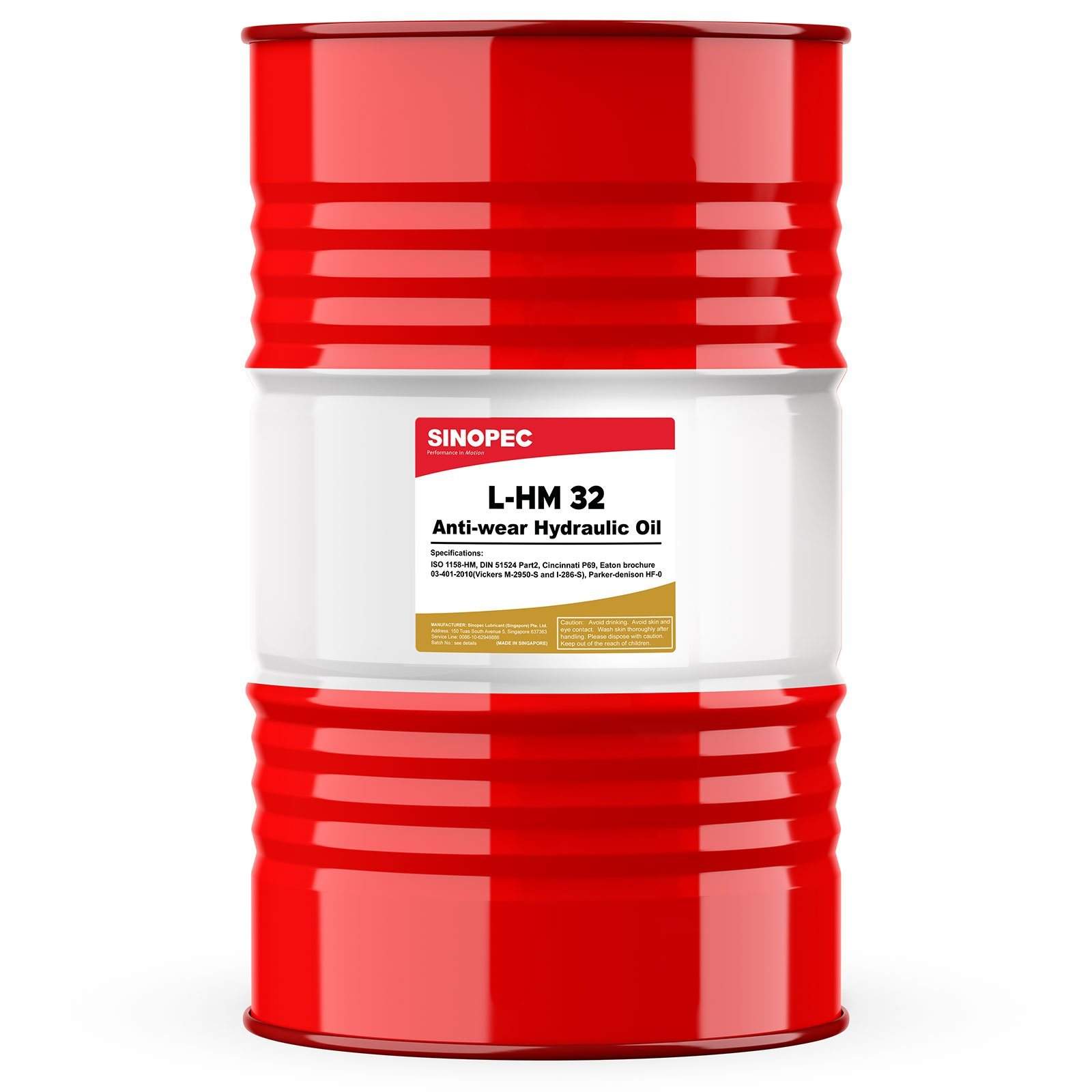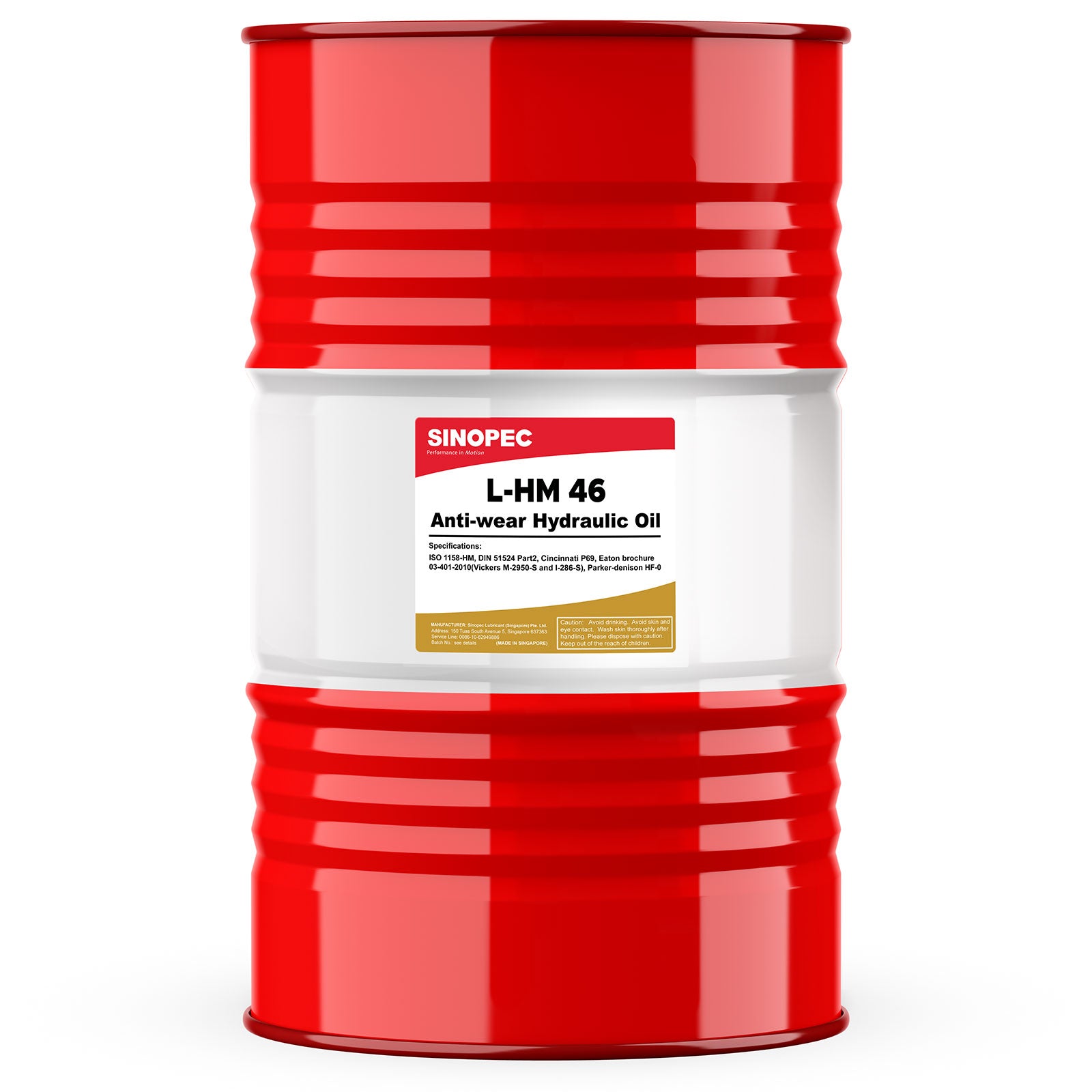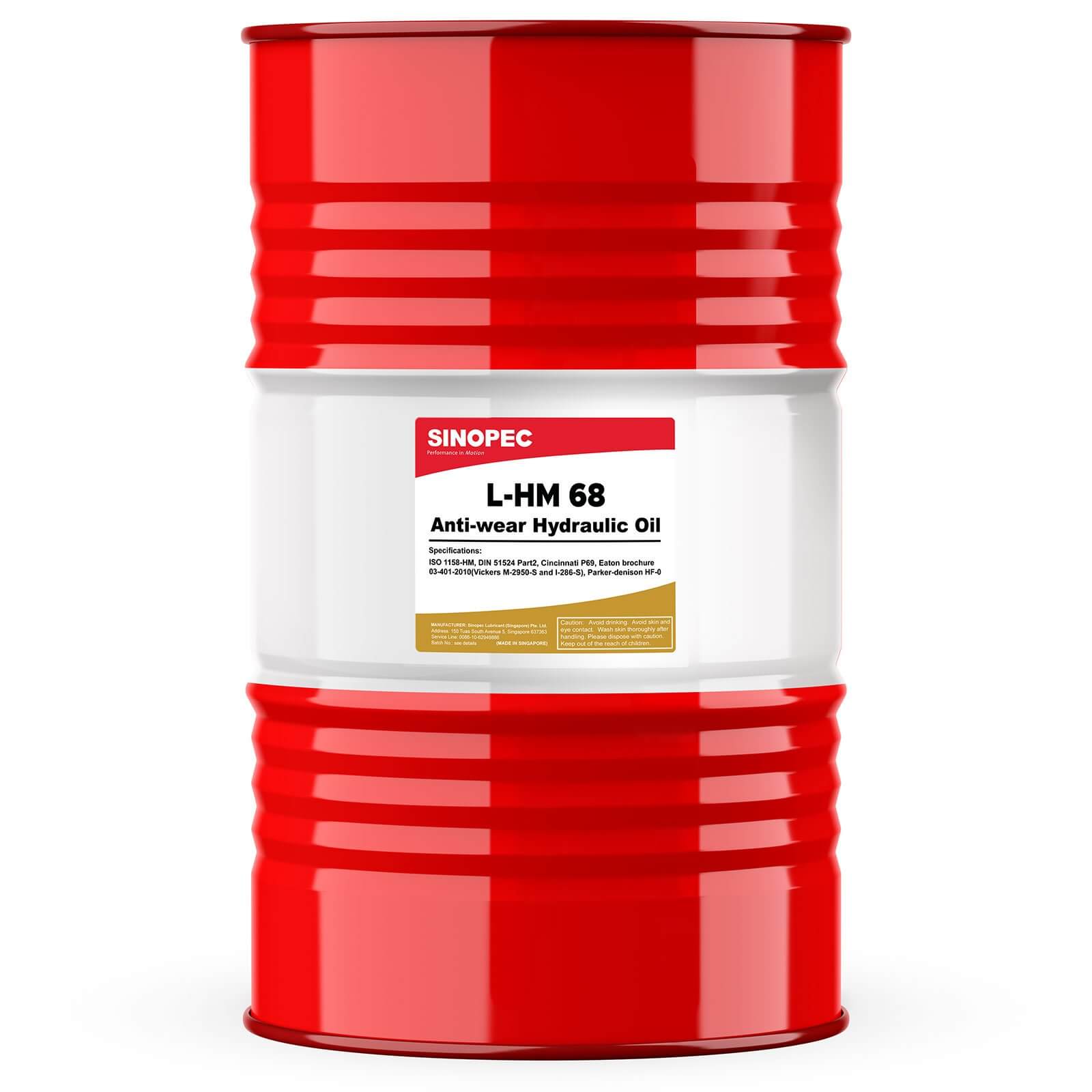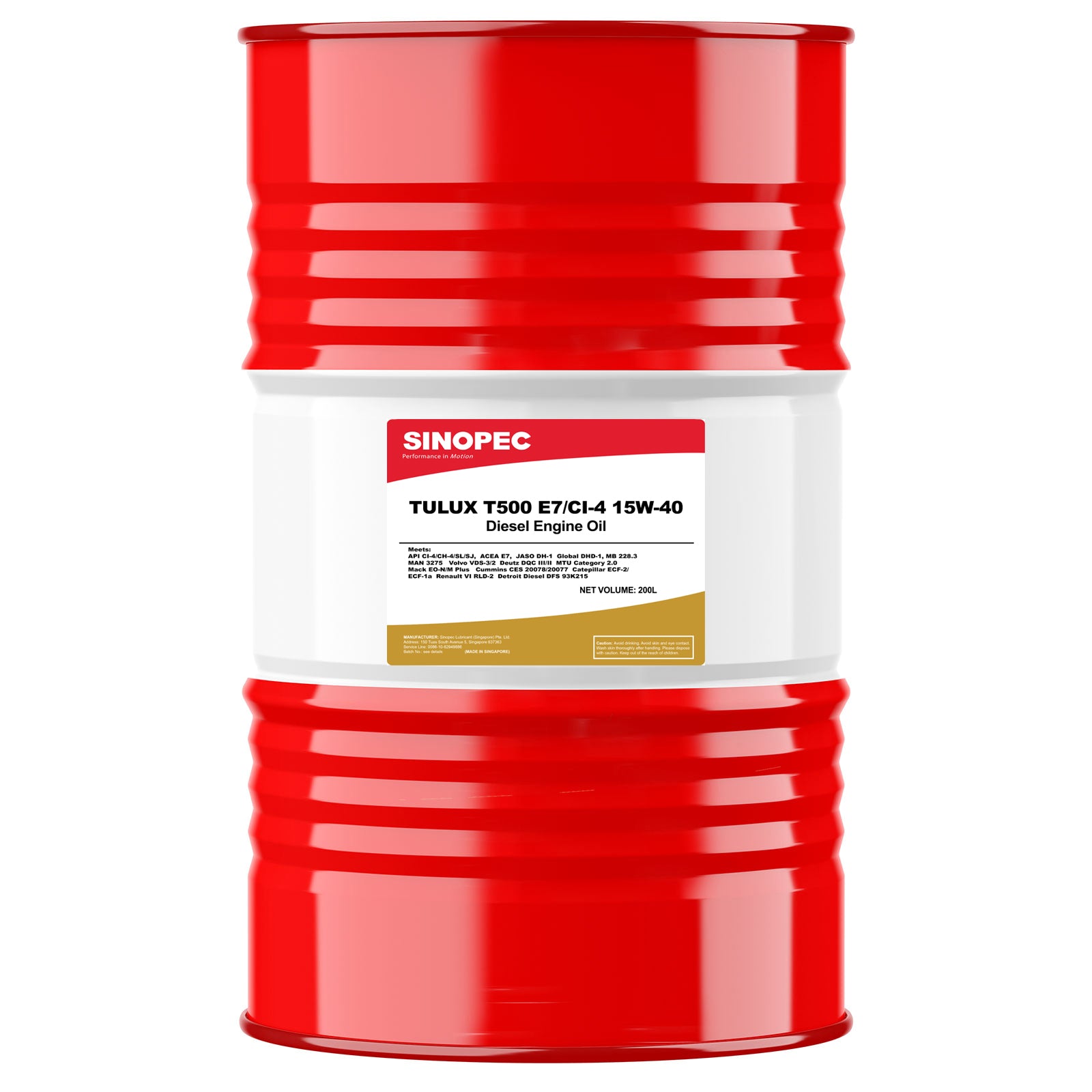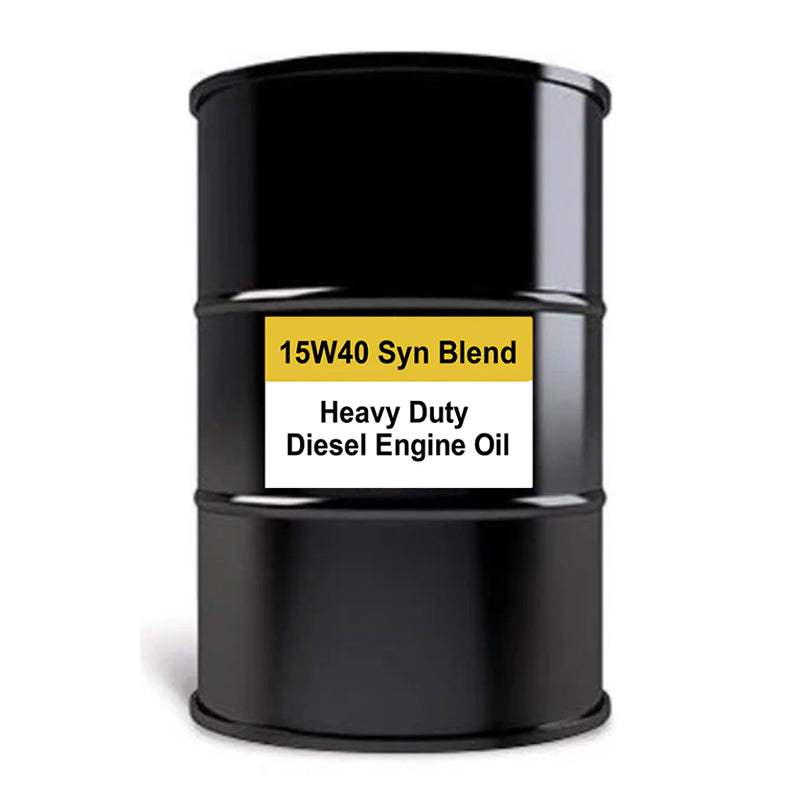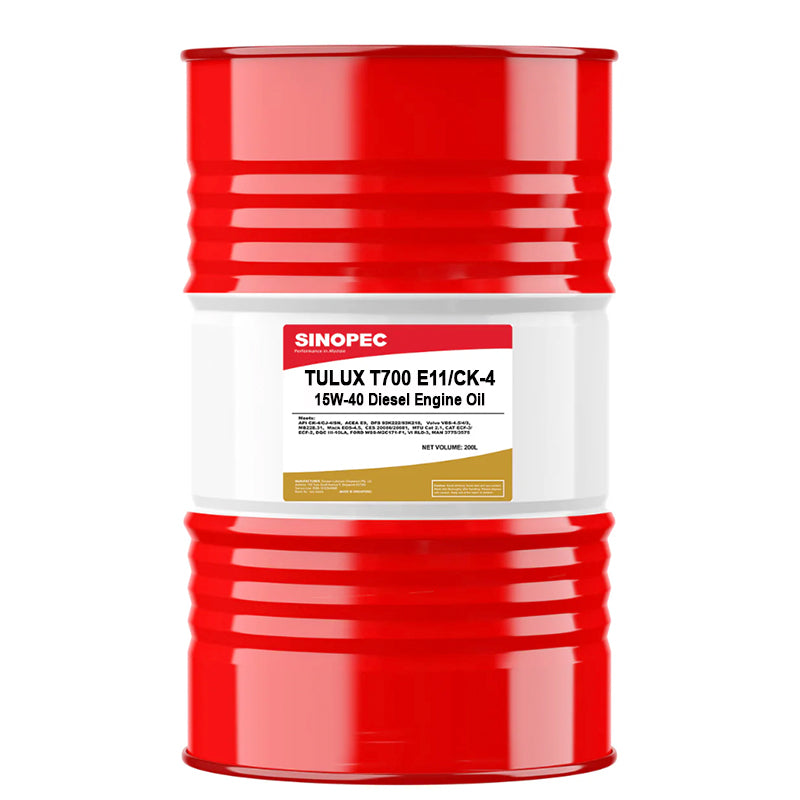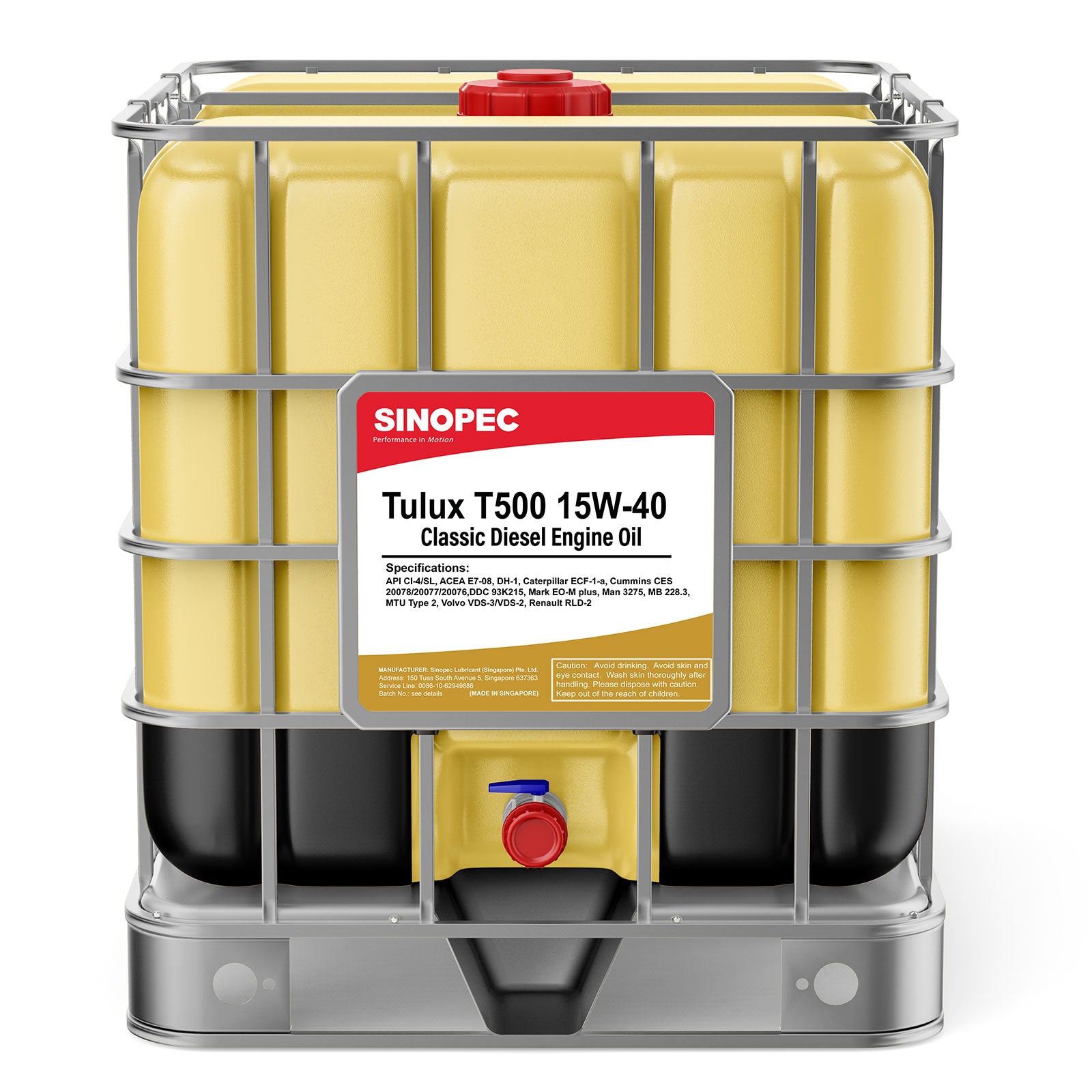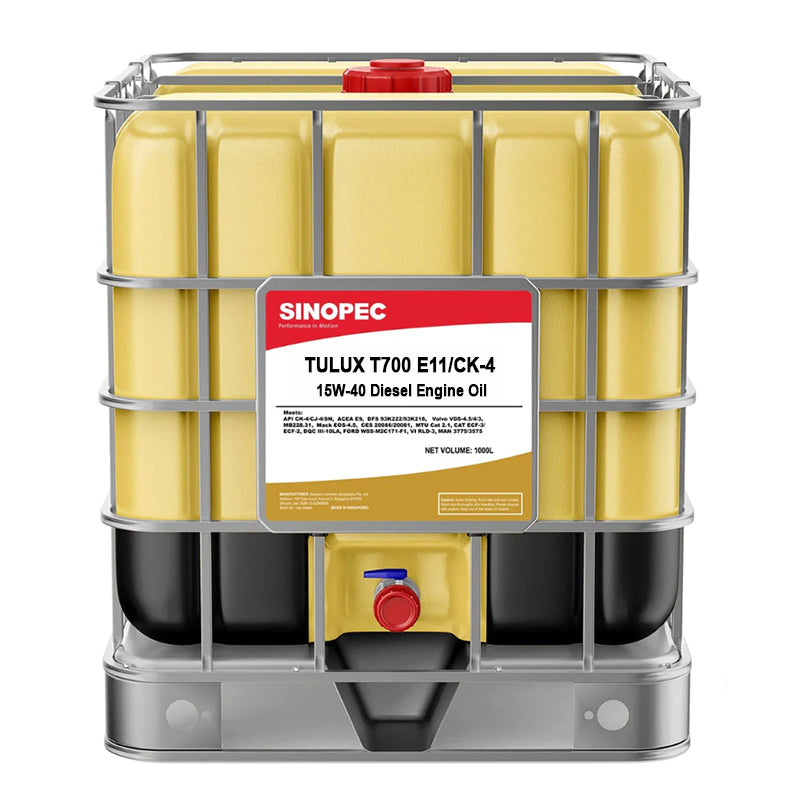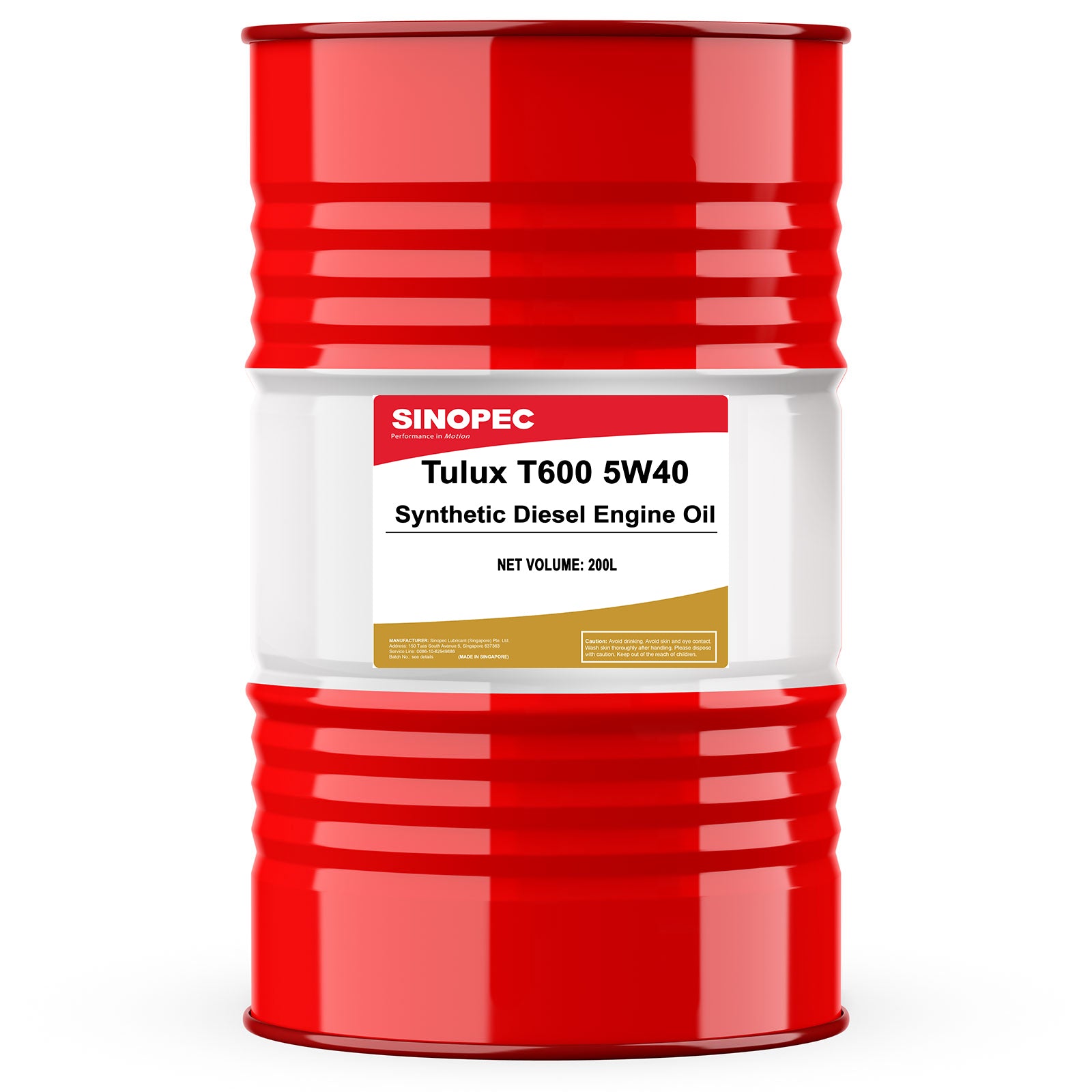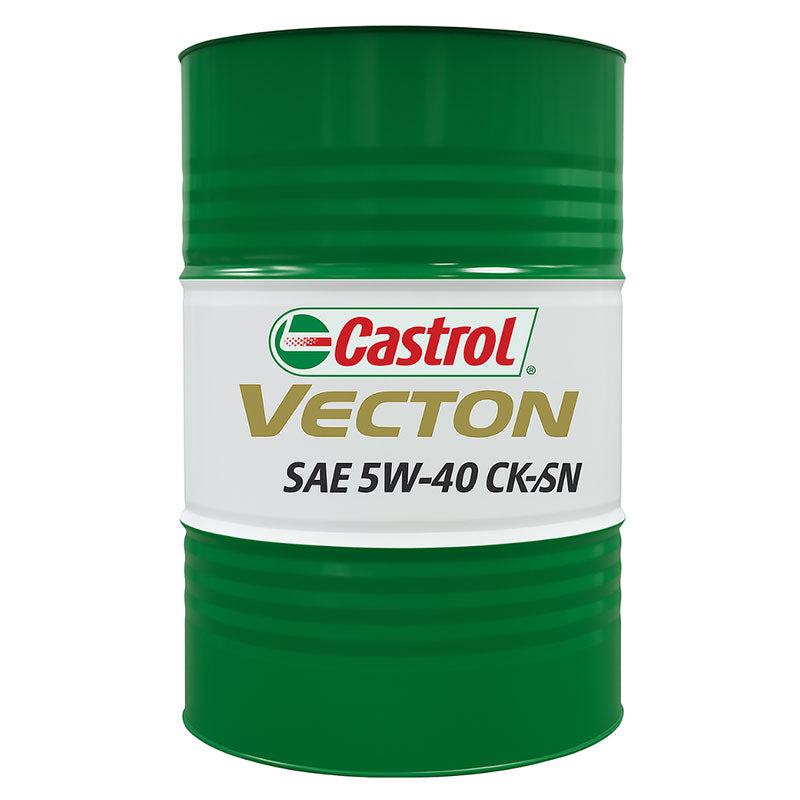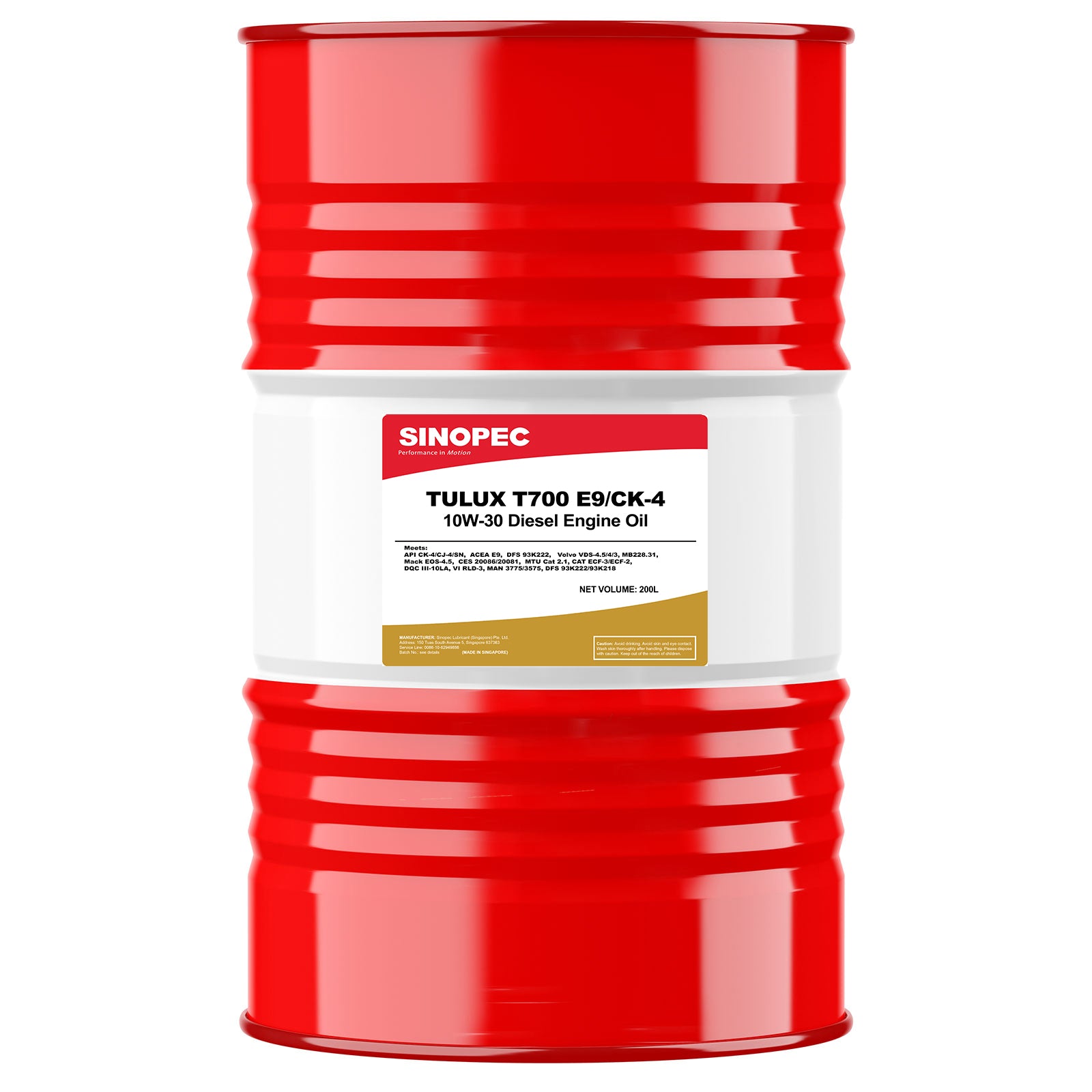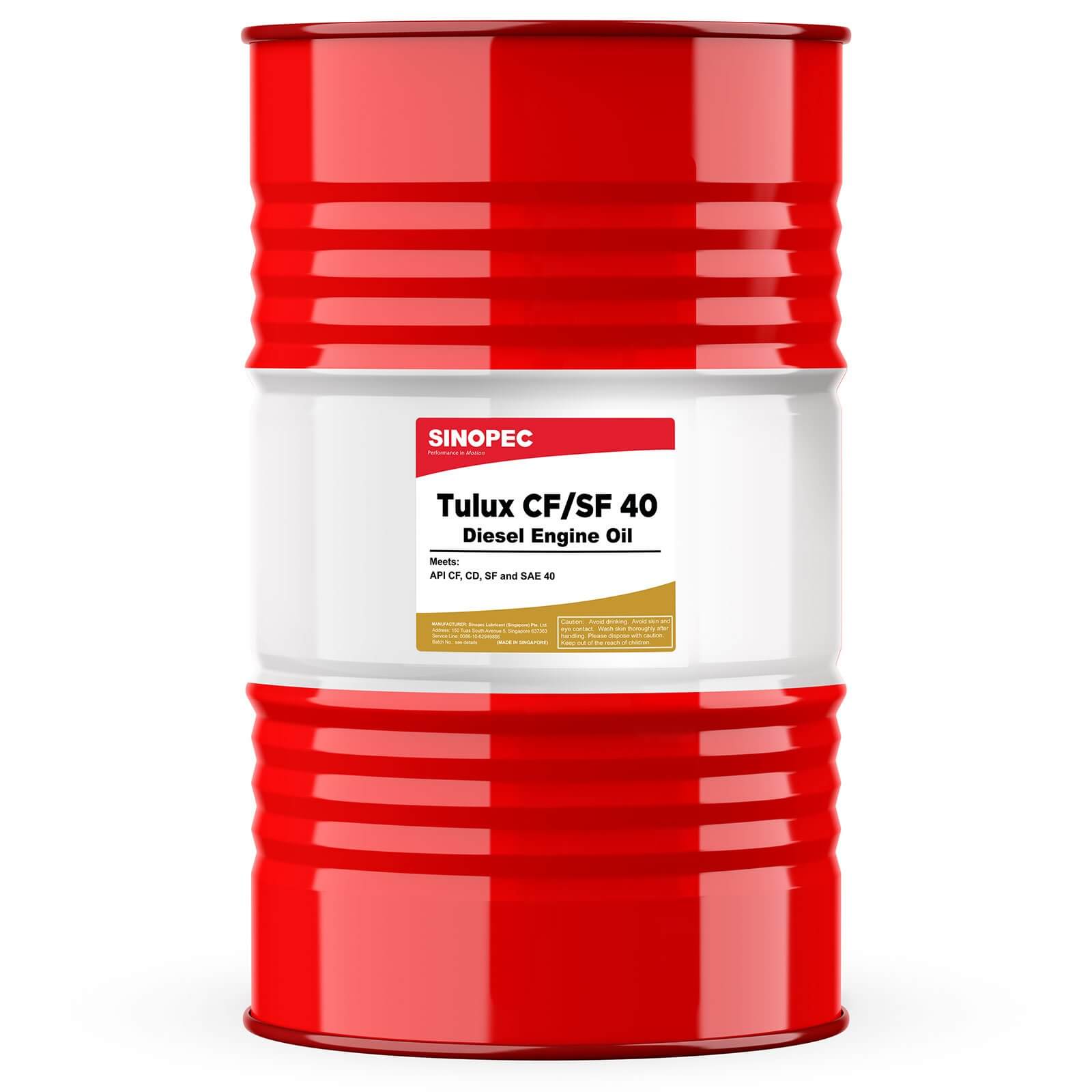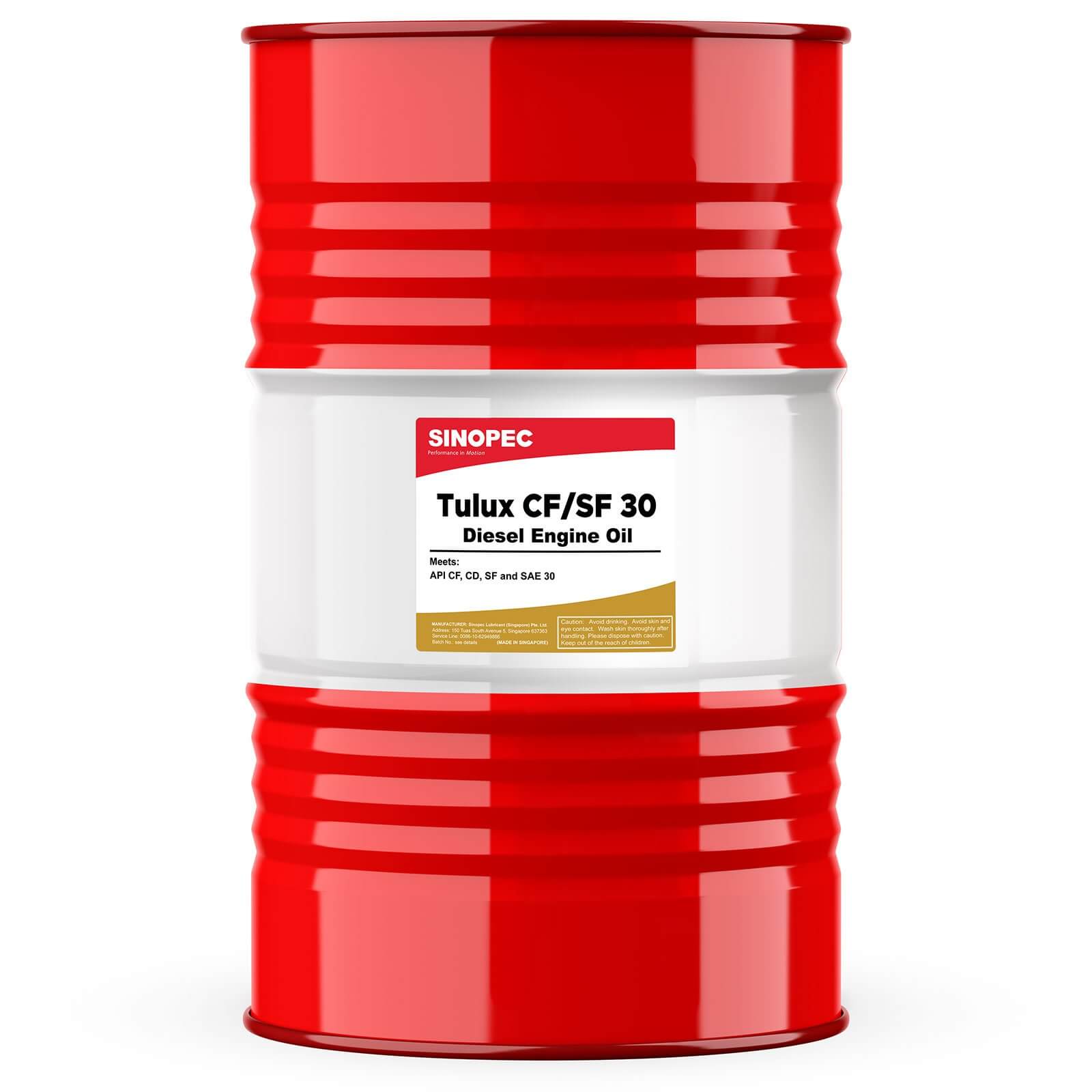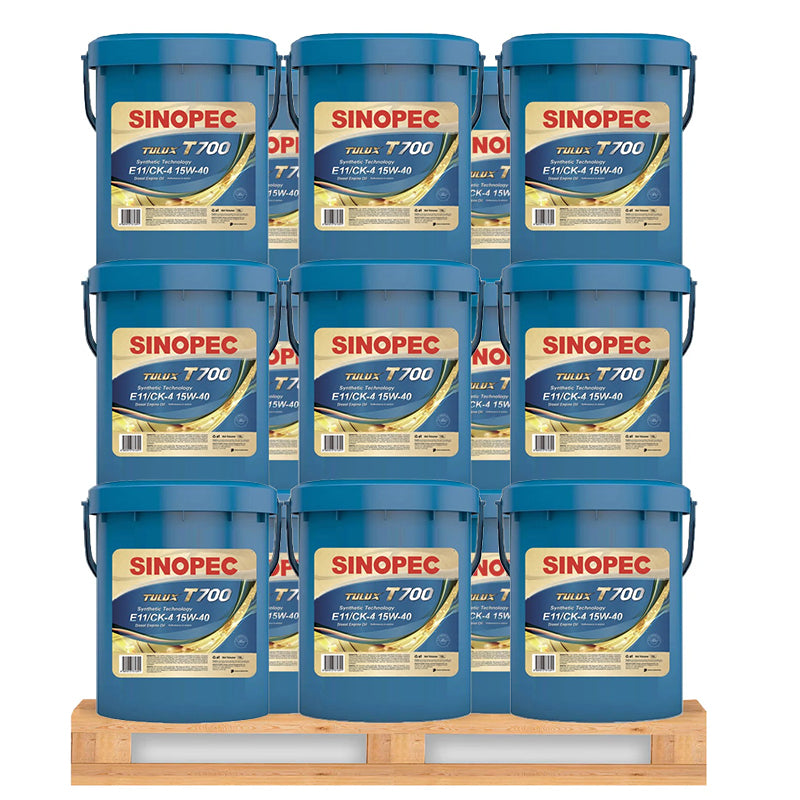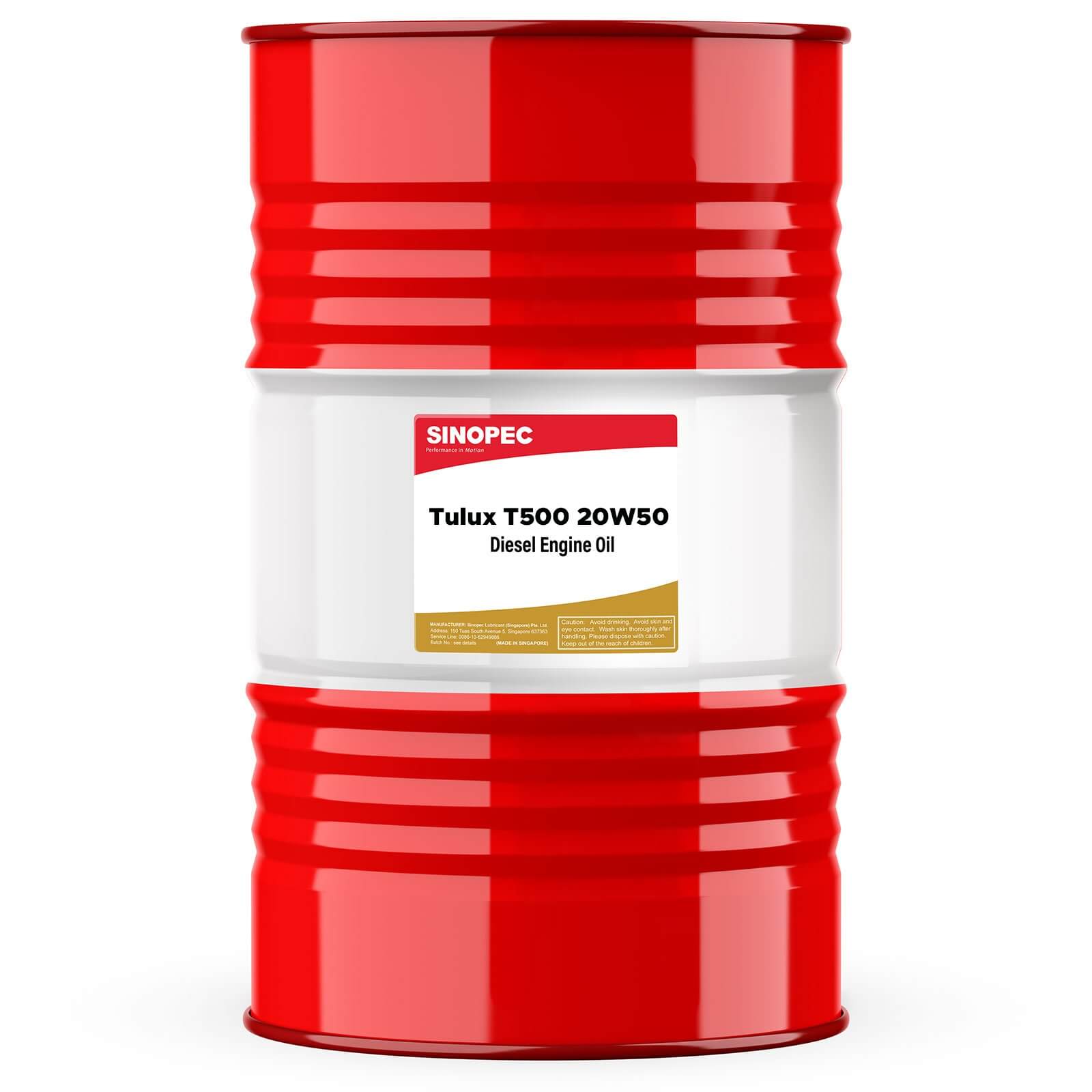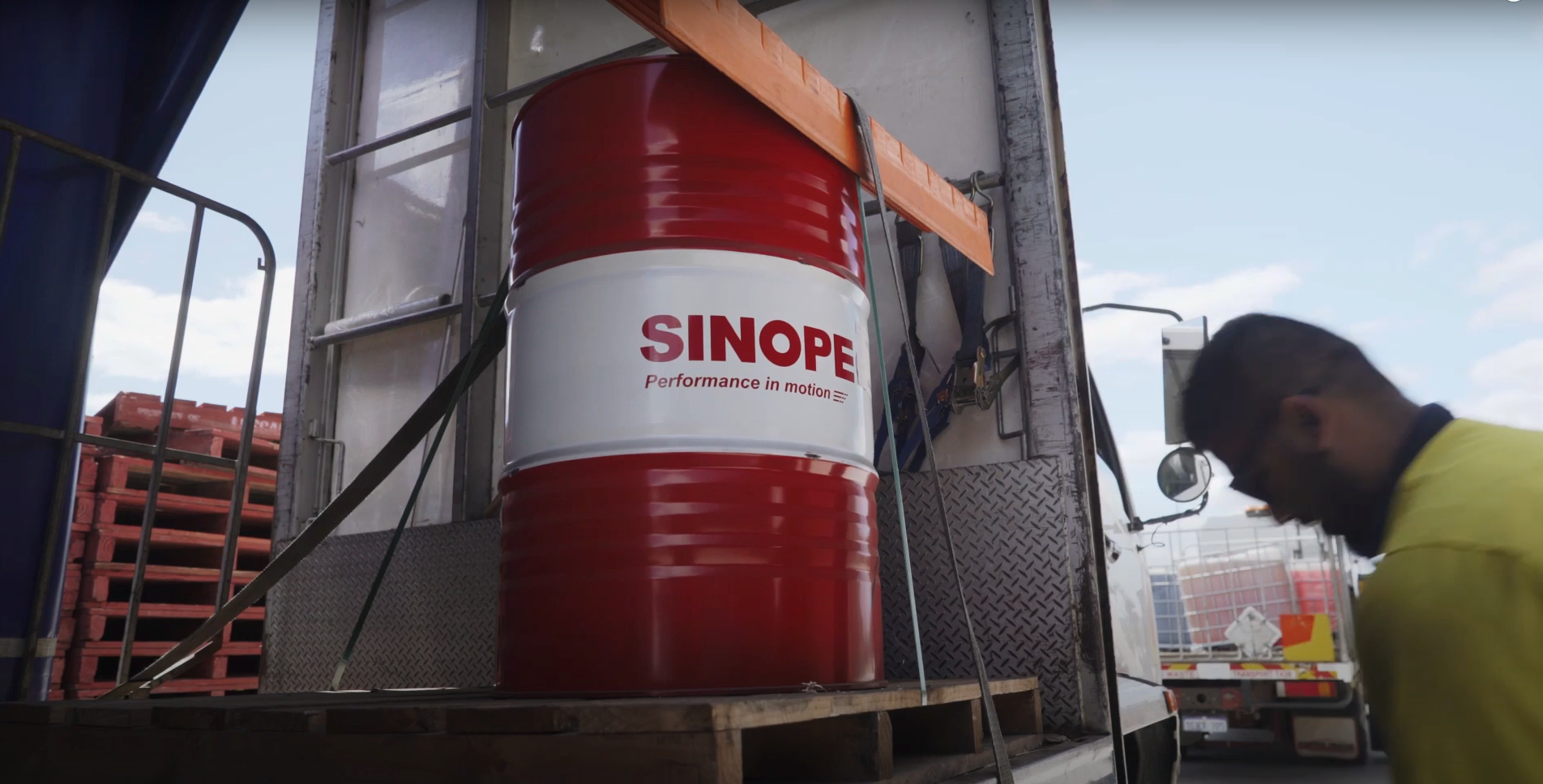The Complete Glossary of Industrial Lubricants: From Basics to Advanced Terms
In the realm of industrial machinery and maintenance, understanding the vast array of lubricants and their applications is crucial for ensuring optimal operational efficiency and longevity. This comprehensive guide delves into the detailed glossary of terms associated with industrial lubricants, providing a thorough understanding for engineers, technicians, and industry enthusiasts.
- Abrasion: Wear caused by hard particles trapped between moving surfaces or by the contact of surfaces in a relative moving state.
- Absolute Viscosity: Often used interchangeably with "viscosity" to differentiate it from kinematic viscosity or commercial viscosity, absolute viscosity is also known as dynamic viscosity. It measures a fluid's resistance to flow and is a critical factor in assessing lubricant performance under varying temperature and pressure conditions.
- Absorption: This is the process by which one substance incorporates or absorbs another. In industrial applications, this can refer to a sponge absorbing water or an oil system designed to recover gasoline from wet natural gas, illustrating how materials interact with fluids in a variety of settings.
- ACC (American Chemistry Council): Formerly known as the Chemical Manufacturers Association (CMA), this national trade association represents the companies engaged in the business of chemistry. Their policies, research, and advocacy play a significant role in the standards that govern the use of chemicals, including those in the lubrication industry.
- ACEA (Association des Constructeurs Européens d'Automobiles): This is the Association of European Automotive Manufacturers, an organization that represents the 15 major Europe-based car, van, truck, and bus makers. ACEA is significant in the lubricants sector because it issues specifications that are critical for the formulation of automotive lubricants that meet the stringent requirements of European manufacturers.
- Acid: Acids are substances with available reactive hydrogen atoms, which require an alkali to neutralize them. They typically have a sour taste, similar to vinegar, and play a crucial role in chemical reactions within various industrial processes.
- Acid Number (AN): This is a critical measurement for lubricants, indicating the amount of potassium hydroxide (KOH) required to neutralize the acidity in a petroleum product. It is also referred to as Neutralization Number (NN) or Value (NV) and Total Acid Number (TAN). The Acid Number is essential for assessing the degradation and contamination level of oils, impacting maintenance and operational efficiency.
- Acid Sludge: The by-product of treating petroleum oils with sulfuric acid to remove impurities. This residue contains the spent acid and other impurities and is typically a black, viscous substance. It highlights the importance of proper waste management and environmental considerations in petroleum processing.
- Acid Treating: A refining process used to enhance the properties of unfinished petroleum products like gasoline, kerosene, and lubricating oil stocks. Treatment with sulfuric acid helps improve their color, odor, and other characteristics, ensuring higher quality and performance standards.
- Acidity in Lubricants: In the context of lubricants, acidity denotes the presence of acid-type constituents, quantified by the Acid Number. These constituents' nature and concentration can significantly influence the lubricant's behavior, affecting both performance and longevity.
- Actuator: In hydraulics, a device which converts fluid pressure into mechanical action or movement. Actuators are critical components in various machinery, enabling precise control over mechanical operations.
- Addendum: In gears, the distance between the tip of a gear tooth and the pitch circle. This measurement is vital for engineers designing gear systems to ensure proper meshing without interference.
- Adhesion: The force that causes two materials, such as lubricating grease and a metal, to stick together. This property is essential in applications where a strong bond between the lubricant and the component surfaces is necessary.
- Additives: Chemical substances added to lubricants to enhance or impart specific properties such as oxidation resistance, wear prevention, and improved viscosity index.
- Adiabatic: Relates to processes in which volume or pressure changes occur without any heat being added or removed. This term is often relevant in the study of thermodynamic systems and processes.
- Adsorption: The process by which atoms, ions, or molecules from a substance (such as a gas, liquid, or dissolved solid) adhere to a surface of the adsorbent. This is critical in filtration and purification processes.
- Aftercooler: A device used to cool air after it has been compressed, typically used in conjunction with air compressors to reduce the temperature and condense water vapor out of the compressed air.
- AFV (Alternate Fuel Vehicle): Vehicles that run on fuels other than traditional petroleum fuels (such as gasoline or diesel), including electric, hybrid, or hydrogen vehicles.
- AGMA (American Gear Manufacturers Association): An organization that serves the gear industry, providing guidelines and standards to ensure quality and compatibility across gear manufacturing.
- Air Entrainment: The incorporation of air in the form of bubbles into a liquid. This can occur through mechanical means or by the release of dissolved air when conditions change abruptly. The presence of entrained air can impact the performance and handling characteristics of hydraulic fluids.
- Air Release: The ability of a fluid, such as hydraulic oil, to release air bubbles that have become entrained in it. This property is crucial in preventing foaming and ensuring the efficient operation of hydraulic systems.
- Aliphatic Hydrocarbon: Hydrocarbons in which carbon atoms are linked in open chains rather than rings. These can be straight or branched chains and are a common structure found in various lubricants due to their stability and reactivity.
- Alkali: Substances with basic properties, often soluble in water and capable of neutralizing acids to form salts. Common alkalis in industrial contexts include hydroxides of ammonium, lithium, potassium, sodium, and the alkaline earth metals like calcium and barium.
- Alkane: A type of hydrocarbon with single bonds only, consisting of straight or branched chains of carbon atoms. Alkanes are major components of many fuels and lubricating oils due to their chemical stability.
- Almen EP Lubricant Tester: A device used to evaluate the load-carrying capacity or extreme pressure properties of gear lubricants. It is essential in assessing the performance characteristics of new lubricant formulations.
- Ambient Temperature: The temperature of the surrounding environment in which a process or machinery operates. This is a crucial factor in the specification of lubricants, as their performance can vary significantly with temperature changes.
- Anhydrous: Describes substances that are free of water, including water of crystallization. Anhydrous conditions are necessary for certain manufacturing and processing environments.
- Aniline Point: The lowest temperature at which an oil and aniline are completely miscible. It is used to measure the solvency of the oil, which affects its ability to dissolve rubber and other materials.
- ANSI (American National Standards Institute): An organization that oversees the creation and dissemination of norms and guidelines that directly impact businesses in nearly every sector in the US, including those related to lubricants.
- Anti-foaming Agent: An additive used in lubricants to suppress the formation of foam, which can impair the function of various mechanical systems, such as hydraulic and cooling systems.
- Anti-freeze Solution: A fluid, such as ethylene or propylene glycol, added to or used to replace the water in engine cooling systems to prevent freezing. Essential for maintaining engine performance in cold environments.
- Anti-friction Bearing: A type of bearing that supports or guides rotating or moving members with ball or roller elements, reducing friction during operation, though not entirely eliminating it.
- Anti-knock: Refers to the resistance of gasoline to premature detonation or knocking in a combustion chamber, which can lead to engine damage.
- Anti-oxidant Additive: Included in some lubricant formulations, these additives prevent the oxidative breakdown of base oils and additives, thus extending the lubricant's life.
- Anti-scuffing Additive: Added to lubricants to form a protective layer on metal surfaces, preventing direct metal-to-metal contact and reducing wear and scuffing.
- Anti-wear Additive: Commonly included in lubricant formulations, these additives help reduce friction and wear on moving parts, enhancing machinery lifespan and efficiency.
- API (American Petroleum Institute): A leading organization that defines standards for the oil and natural gas industry, including specifications for engine oils and lubricants.
- API Gravity: A measure used to quantify the density of petroleum liquids relative to water. The higher the API gravity, the lighter the compound.
- API Service Classification: A classification system developed by API, SAE, and ASTM that outlines service designations for engine oils and automotive gear lubricants based on different operating conditions.
- Apparent Viscosity: A term that describes the flow resistance of a grease at varying temperatures and flow rates, indicating its performance characteristics under different operational conditions.
- Aromatic: Organic compounds characterized by one or more benzene rings in their molecular structure, known for their stability and are often used in the production of synthetic lubricants.
- Ash: Non-combustible residue left after a lubricating oil or fuel has burned, often originating from metallic additives in detergent additives.
- Ash Content: Represents the non-combustible residues that remain after a sample of oil has been burned, typically indicating the presence of metallic additives in the lubricant.
- Asperity: Refers to microscopic irregularities or roughness on metal surfaces, which can impact wear and friction in mechanical systems.
- ASLE/STLE (American Society of Lubrication Engineers / Society of Tribologists and Lubrication Engineers): An organization that sets standards for lubrication and maintenance practices, contributing significantly to industry guidelines.
- Asphalt: A dark brown to black cementitious material, primarily composed of bitumens that occur naturally or are produced in refining processes. It is used in various industrial applications for waterproofing and sealing.
- Asphaltene: High molecular weight compounds that are primarily found in heavy residual oils, characterized by their complex structures incorporating sulfur, nitrogen, vanadium, and nickel.
- Asphaltic: Typically refers to lubricating oils derived from naphthenic base crude oils that are rich in asphalt content, used in specific industrial applications for their unique chemical properties.
- ASTM (American Society for Testing and Materials): An international standards organization that develops and publishes consensus standards for a wide range of materials, products, systems, and services, including those related to lubrication and petroleum products.
- ASTM Colorimeter: A device used to measure the color of lubrication oils, based on the ASTM D1500 method, providing an important indicator of oil quality and suitability for various applications.
- ASTM Distillation: A test procedure, per ASTM D86, used to determine the boiling range characteristics of petroleum products like gasoline and kerosene, essential for quality control and ensuring proper performance.
- ASTM Gum Test: Analytical method used to measure the potential gum content in gasoline, indicating the stability and cleanliness of the fuel.
- ASTM Melting Point: The temperature at which wax first shows as a minimum rate of temperature change; also known as the English melting point. This measurement is important in evaluating the thermal properties of various waxes used in lubricating formulations.
- ASTM Viscosity Classification: A system used to specify the viscosity levels of industrial lubricants based on defined ranges that are standardized globally. While this classification helps in selecting the appropriate viscosity for an application, it does not assess the quality of the lubricant.
- ATC (Technical Committee of the Petroleum Additive Manufacturers): A group that focuses on the regulatory and scientific aspects of petroleum additives, playing a key role in advancements and compliance within the industry.
- ATF (Automatic Transmission Fluid): A type of fluid used in vehicle automatic transmission systems that requires specific properties to ensure proper function and longevity of the transmission.
- ATIEL (Association Technique de l’Industrie Europeene des Lubrifiants): A European association that provides technical guidelines for lubricants used in automotive applications, ensuring compatibility and performance across the industry.
- Atmosphere: A unit of pressure used to denote standard atmospheric pressure, equivalent to the pressure exerted by the weight of the atmosphere at sea level.
- Atmospheric Distillation: A process where a liquid is heated to form a vapor and then condensed back into liquid at atmospheric pressure, commonly used in the refining of crude oil into various fractions.
- Atomic Absorption Spectroscopy: An analytical technique used to measure the absorption of radiation by free atoms, widely utilized in the quality control of lubricants to detect and quantify trace metals.
- Auto-ignition: The spontaneous ignition of a fuel-air mixture in an engine without an external spark, leading to a rapid, explosive reaction known as knocking, which can cause engine damage.
- AVGAS (Aviation Turbine Fuel): A high-quality fuel used in aircraft turbines, requiring strict specifications for performance and safety.
- Aviation Method: A testing method (ASTM D 614) used to determine the knock-limited power output of aviation fuels under specified lean-mixture conditions.
- Axial Compressor: A dynamic compression device that increases the pressure of a gas by accelerating it through a narrowing path, commonly used in jet engines and industrial applications.
- Axial Load Bearing: A type of bearing designed to handle loads applied along the axis of rotation, essential in various mechanical systems for maintaining alignment and reducing friction.
- Axial Piston Pump: A pump in hydraulic systems featuring several pistons in a cylindrical block that move in and out, converting rotational motion into fluid power.
- Babbitt: A soft, white alloy primarily made of tin, lead, copper, and antimony, used to provide bearing surfaces that reduce friction and wear.
- Bactericide: An additive used in lubricants and other fluids to prevent bacterial growth, which can degrade the fluid and produce odors. This is crucial in systems where water contamination is a
- Ball Bearing: An anti-friction bearing that uses balls as rolling elements to maintain the separation between the bearing races, reducing friction, heat, and wear.
- Bar: A unit of pressure, where one bar is defined as 100,000 newtons per square meter and roughly equivalent to the atmospheric pressure at sea level.
- Barrel: A unit of volume used in the petroleum industry, where one barrel equals 42 US gallons. It is commonly used to measure quantities of crude oil and other petroleum products.
- Base Number: A measure of a lubricant's reserve alkalinity, which is important for neutralizing acids formed during fuel combustion. It provides insights into the depletion rate of additive packages in engine oils.
- Base Oil: The primary fluid component in lubricant formulations, typically consisting of highly refined mineral oils or synthetic oils to which additives are blended to produce the final lubricant product.
- Batch: Refers to any quantity of material handled or processed as a single unit, particularly relevant in manufacturing and processing industries.
- Base Stock: High-quality, fully refined base oil used in the formulation of lubricants, providing the essential properties needed before additives are introduced.
- Bearing Speed Factor: A parameter used to assess the suitability of a lubricant for specific bearing applications, considering the size and rotational speed of the bearing.
- Bentonite: A clay mineral used as a thickening agent in greases, providing high-temperature stability and water resistance. Also used in drilling muds for its sealing and lubricating properties.
- Benzene: A basic petrochemical compound used as a precursor in the manufacture of various synthetic materials and as a high-octane additive in fuels.
- Benzene Insoluble: A measure of materials in used lubricating oils that are insoluble in benzene, indicating the presence of certain contaminants or oxidation products.
- Bevel Gear: Gears that transmit power between two shafts oriented at an angle to each other, typically used in differential drives of vehicles.
- Biodegradability: The capability of a substance to be decomposed by biological processes, which is crucial for assessing the environmental impact of lubricants.
- Bitumen: A viscous mixture of hydrocarbons derived from petroleum distillation, used primarily for road construction and waterproofing applications due to its adhesive and sealing properties.
- Bleeding: The phenomenon where a liquid component (usually oil) separates from a grease under certain conditions, providing necessary lubrication to bearing surfaces.
- Blending: The process of mixing base oils and additives to create lubricants with desired performance characteristics. This can involve intricate formulations to achieve specific viscosity, stability, or additive properties.
- Block Grease: A type of grease characterized by its high soap content, which remains firm at room temperature and can be handled in solid form.
- Bloom: A visual sheen or fluorescence observed on some petroleum products, indicating the presence of certain aromatic compounds.
- Blotter Test: A diagnostic test used to assess the contamination level in used engine oil by applying a drop of oil on a blotter paper and observing the spread and characteristics of the oil.
- Blown Bitumen: Bitumen modified by blowing air through it at high temperatures, enhancing its performance characteristics for industrial applications other than road making.
- Boiling Point: The temperature at which a substance turns to vapor. This property is fundamental for understanding the thermal stability and distillation characteristics of lubricants.
- Border Line Pumping Temperature (BPT): The lowest temperature at which an oil can be pumped through an engine's lubrication system, crucial for cold-start performance.
- Bore Polishing: A phenomenon where the surface finish of an engine's cylinder bore becomes excessively smooth, leading to increased oil consumption and reduced engine efficiency.
- Bottoms: The residue or heavier fractions collected at the bottom of a distillation column or vessel during the refining process.
- Boundary Lubrication: A lubrication condition where the lubricant film is too thin to completely separate the contacting surfaces under load, leading to increased friction and wear.
- Bearing: A machine element that constrains relative motion to only the desired motion, and reduces friction between moving parts.
- Bright Stock: A type of refined, high viscosity base oil typically derived from residual stocks using processes like solvent extraction, propane de-asphalting, or catalytic dewaxing. Bright stock is used extensively in the formulation of high-viscosity, high-temperature lubricants.
- British Thermal Unit (BTU): A unit of heat defined as the amount required to raise the temperature of one pound of water by 1°F at its maximum density, which occurs at approximately 39.2°F.
- BSI (British Standards Institution): A national body in the UK that develops and certifies standards for products and systems across a variety of sectors, including lubricants and industrial chemicals.
- BS&W (Bottom Settling and Water): Refers to the sediment and water that collect at the bottom of storage tanks containing crude oil or other fluids. This material needs to be routinely monitored and managed in petroleum operations.
- BTC (British Technical Council): An organization that provides technical guidance and standards development across various industries in the UK.
- Bulk Modulus: The measurement of a fluid's compressibility, expressed as the ratio of pressure applied to a fluid to the resultant change in its volume.
- Bunker "C" Fuel Oil: A heavy residual fuel oil typically used in large ship engines and industrial heating applications. It is known for its high viscosity and high energy content.
- Burning: In the context of gears, burning refers to a type of wear that occurs due to excessive friction and overheating, often resulting in damage to the gear surfaces.
- Butane: A gaseous hydrocarbon of the paraffin series, existing in isomeric forms such as n-butane and isobutane. It is used as a fuel and a refrigerant.
- By-Pass Filtration: A filtration system where only a part of the total flow of a circulating fluid system is passed through a filter. This can extend the life of the filter and allow for continuous operation without interruption.
- CAFE (Corporate Average Fuel Economy): Regulations in the United States aimed at improving the average fuel economy of cars and light trucks manufactured or imported into the country.
- Cage: In a rolling bearing, the cage is a component that separates and holds the rolling elements (balls or rollers), maintaining their position relative to each other and to the races.
- Calcium Base Grease: A type of grease made from lubricating oil thickened with calcium soap, known for its good water resistance but limited thermal stability at higher temperatures.
- Calorie: A unit of heat where one small calorie (gram calorie) raises the temperature of 1 gram of water by 1°C, and one large calorie (kilogram calorie) raises the temperature of 1 kg of water by 1°C.
- Camshaft: A shaft to which cams are attached, converting rotational motion into linear motion. This is critical in internal combustion engines for opening and closing valves.
- Capillary Viscometer: An instrument used to measure the viscosity of a fluid by allowing it to flow through a thin tube (capillary), providing essential data on fluid dynamics under controlled conditions.
- CARB (California Air Resources Board): A regulatory body in California, United States, focused on maintaining healthy air quality and regulating emissions from vehicles and industrial sources.
- Carbide Tooling: Refers to cutting or machining tools made from carbides (e.g., tungsten carbide) bonded with a metal, typically cobalt or nickel. Known for their hardness and durability, these tools are used in various industrial manufacturing processes.
- Carbon Residue: A measure of the amount of carbonaceous material left after a lubricant or fuel has been subjected to pyrolysis; an indicator of the material's tendency to form deposits under high temperature conditions.
- Catalytic Dewaxing: A process used in lubricant manufacturing to remove waxy components from base oils, improving the oil's low-temperature fluidity and performance.
- Cavitation: The formation of vapor cavities in a liquid—i.e., "bubbles" or "voids"—that occur when the pressure within the liquid falls below its vapor pressure, leading to potential mechanical damage in hydraulic systems.
- CCMC (Comité des Constructeurs d'Automobile du Marché Commun): The Committee of Common Market Automobile Manufacturers, representing the interests of the automotive industry within the European Union.
- CCS (Cold Cranking Simulator): A test method used to evaluate the low-temperature performance of engine oils, specifically their ability to aid engine starting in cold conditions.
- CEC (Coordinating European Council): An organization that conducts research and establishes standards for fuels, lubricants, and other automotive components in Europe.
- Centipoise (cP): A unit of dynamic viscosity in the CGS system where 1 centipoise equals 0.01 poise. It's used to describe the fluidity of lubricants under specific conditions.
- Centistoke (cSt): The kinematic viscosity unit in the CGS system, used to describe the internal resistance of fluids under gravity, where 1 centistoke equals 1 mm²/s.
- Cetane Number: A measure of the combustion quality of diesel fuel. The higher the cetane number, the easier the fuel ignites and the smoother the engine runs.
- Centane Number Improver: Additives used in diesel fuels to increase the cetane number, thereby improving combustion efficiency and reducing engine knock.
- Centralised Lubrication System: A system designed to supply lubricant from a central source to various points in a machine or piece of equipment, ensuring consistent lubrication and reducing maintenance requirements.
- Centrifugal Compressor: A type of compressor that utilizes rotational movement to increase the pressure of gases, commonly used in various industrial applications, including HVAC systems and gas turbines.
- Cetane Index: An estimated measure of the cetane number calculated from the fuel's density and distillation range. It helps in evaluating diesel fuel's ignition quality in the absence of engine testing.
- CETOP (European Oil Hydraulic and Pneumatic Committee): An organization representing the interests of the hydraulic and pneumatic industries in Europe, focusing on standardization and product quality.
- CFCs (Chlorofluorocarbons): A class of volatile chemical compounds used historically as refrigerants, solvents, and blowing agents but are now largely regulated due to their impact on the ozone layer.
- CFPP (Cold Filter Plugging Point): The lowest temperature at which a diesel or other fuel is able to pass through a specified filter, indicating the fuel's suitability for cold weather use.
- CFR (Coordinating Fuel and Equipment Research Committee): A committee that collaborates on research regarding fuel and engine technologies, often under the umbrella of the Coordinating Research Council.
- Channeling: In lubrication and filtration, channeling describes a condition where the fluid creates channels through the medium, leading to uneven flow or filtration.
- Chemical Stability: The resistance of a substance to change in its chemical structure, important for evaluating the long-term stability of lubricants under various operational conditions.
- Chromatography: A method for separating mixtures into their constituent components through selective adsorption on a stationary phase, crucial for analyzing complex mixtures such as lubricants to ensure quality and performance.
- CID (Commercial Item Description): A standard that provides descriptions for various items procured by the government, ensuring that materials meet specified requirements for performance and safety.
- Circulating Lubrication: A lubrication system where the lubricant is circulated to various parts of a machine or engine for cooling and lubrication before being recirculated.
- Cleveland Open Cup (COC): A test method used to determine the flash point and fire point of petroleum products, indicating how easily a substance will ignite in open air.
- Cloud Point: The temperature at which dissolved solids in lubricating oils or fuels begin to crystallize, leading to cloudiness. This is critical for understanding the low-temperature usability of diesel fuels and biodiesel.
- CMA (Chemical Manufacturers Association, now known as the ACC, American Chemistry Council): An industry association representing chemical manufacturers in the United States, which sets standards for chemical production and promotes responsible chemical management.
- Coalescer: A device used in filtration systems to separate liquid droplets from gases or vapor streams, typically used in pneumatic and hydraulic systems to ensure clean, dry operation.
- COC (Cleveland Open-Cup Tester): Equipment used to perform the COC test, determining the temperatures at which petroleum products will flash and catch fire in an open cup under specific conditions.
- Cetane Number: A measurement of the combustion quality of diesel fuel during compression ignition, with a higher cetane number indicating a fuel that ignites more quickly.
- Coefficient of Friction :The ratio of the friction force between two bodies to the perpendicular force pressing them together. Essential for understanding material interactions under load.
- Co-gellant: A substance that works with a soap to enhance the thickening properties of greases, providing a stable structure.
- Colour :While not directly indicative of quality, the color of petroleum products is used for identification and can suggest contamination or degradation if unexpected changes occur.
- Compatibility: Refers to the ability of two or more materials to coexist without adverse reactions, which can compromise the function or integrity of a system.
- Complex Grease: Greases formulated with a conventional soap thickener and a complexing agent, offering enhanced performance characteristics such as higher dropping points and better water resistance.
- Compressibility: The measure of how much a fluid's volume decreases under pressure. Critical for hydraulic systems where fluid compression can affect performance.
- Compression Ignition: Used in diesel engines where fuel ignites due to the heat generated by compressing air in the combustion chamber, not by a spark.
- Compression Ratio: The ratio of the volume of an engine's combustion chamber from its largest capacity to its smallest capacity. Crucial for understanding engine efficiency and performance.
- Compressor: A device that increases the pressure of a gas by reducing its volume, essential in various industrial and refrigeration processes.
- Compounded Oil: Oil that has had additives mixed in to enhance properties such as oxidation resistance, viscosity index, and thermal stability.
- Compounding: The process of adding materials such as fatty oils to lubricants to impart specific beneficial properties.
- CONCAWE: The Conservation of Clean Air and Water in Europe, an organization representing oil companies in Europe focusing on environmental and health protection.
- Connecting Rod: A critical engine component that connects the piston to the crankshaft, transferring force from the piston to the crankshaft and converting reciprocating motion into rotational motion.
- Consistency: Refers to the thickness or hardness of a grease, measured typically by its ability to resist deformation under an applied force.
- Coordinating Research Council, Inc.: An organization that facilitates cooperation among various stakeholders in the automotive industry to enhance scientific research and standards development.
- Copper Dish Gum: A measure of the gum content in gasoline, indicating the stability and cleanliness of the fuel.
- Copper Strip Corrosion: A test that measures the corrosivity of petroleum products towards copper, indicating the level of corrosive compounds present.
- Corrosion: The degradation of materials by chemical reactions with their environment, significant for the longevity and reliability of metal components and structures.
- Corrosion Inhibitor: Additives used in lubricants to protect machine parts from corrosion caused by moisture, contaminants, and other reactive substances.
- Crankshaft: A fundamental engine component that converts the linear motion of pistons into rotational motion necessary to power a vehicle.
- CRC (Coordinating Research Council): Promotes advancements in automotive engineering through research and collaboration between the auto industry and academic institutions.
- Crossed Helical Gear: Gears that transmit power between two shafts at an angle, utilizing a meshing process that reduces noise and vibration.
- Crosshead: Used in large reciprocating engines, connects the piston to the connecting rod and helps to guide the piston in the cylinder.
- Crude Wax: A byproduct of the oil refining process used in applications requiring solid waxes or further refined into more specialized products.
- CUNA (Commissione Tecnica de Unificazione nel l’Autoveicolo): An Italian standardization body for automotive technical standards, ensuring compatibility and interchangeability of parts.
- Cup Grease: An early form of grease used for specific applications where semi-solid lubricants were required for simple lubrication tasks.
- Cutback Bitumen: Bitumen whose viscosity has been reduced with solvents to make it more workable at lower temperatures for road construction.
- Cutting Fluid or Oil: Specialty oils or fluids used in machining and metalworking processes to cool and lubricate the cutting tool and workpiece, helping to improve the quality of the finish and extend tool life.
- Cut-out: A safety device that automatically stops a machine or system when it detects an overload condition to prevent damage or failure.
- Cycloalkane: A saturated hydrocarbon with carbon atoms arranged in one or more rings, providing stability and used in various chemical formulations.
- DAP (Detroit Advisory Panel): An influential group in the automotive industry that advises on standards and practices for vehicle manufacturing and safety.
- Deasphalting: A refining process that removes heavier fractions from crude oil to improve the quality of the remaining oil or to produce asphalts for industrial use.
- Dedendum: The portion of a gear tooth that lies below the pitch circle, fundamental for meshing accuracy and gear design.
- Deformation: The change in shape or dimensions of a material under stress, critical for assessing material performance under load conditions.
- Degree-Day: A measurement used in the energy industry to estimate heating and cooling requirements based on the difference between the daily temperature and a base temperature.
- Degree Engler: A unit of measure for viscosity based on the time it takes a specific volume of liquid to flow out of a standard Engler viscometer.
- Demulsibility: The ability of an oil to separate from water, important for lubricants used in environments where water contamination is likely.
- Demulsification: The process by which emulsions (mixtures of oil and water) are broken down, critical in oil recovery and purification processes.
- DensityA fundamental property of substances, defined as mass per unit volume, used to characterize fluids and solids in various applications.
- DEO (Diesel Engine Oil): Specially formulated oil used in diesel engines to lubricate, protect against wear, and maintain performance under demanding conditions.
- Detergency: The ability of an oil to clean or prevent the deposition of sludge and other contaminants in engines and other machinery.
- Detergent: A component in lubricant formulations that helps keep surfaces clean by preventing the adherence or formation of contaminants.
- Dewaxing: A process used in oil refining to remove waxes from lubricant base stocks to improve the low-temperature fluidity and performance of the oil.
- DI (Direct Injection) :A type of fuel injection system in engines where fuel is directly injected into the combustion chamber, enhancing performance and efficiency.
- Dielectric Strength: A measure of an insulating material's ability to withstand electrical stress without failure, indicating the material's effectiveness as an insulator.
- Diesel Engine: An engine that relies on compression ignition of diesel fuel to produce power, known for its efficiency and torque output.
- Diesel Index: A method to assess the quality of diesel fuel based on its cetane number and specific gravity, providing a measure of its combustion quality.
- Diester Oil: A synthetic lubricant made from esters, known for its excellent lubricity and stability under high and low-temperature conditions.
- DIN (Deutsche Industrie Norm): German industrial standard, representing a range of technical standards used for consistency in manufacturing and quality assurance.
- Dispensability: The ease with which a grease can be applied or transferred from its container to the point of lubrication, important for automated systems.
- Dispersant: An additive in lubricants that helps maintain cleanliness by keeping solid particles in suspension within the fluid, preventing deposit formation.
- Dispersing: The process of uniformly distributing particles within a liquid, critical in lubricant formulations to ensure consistent performance.
- Distillate: A liquid product condensed from the vapor phase during distillation, often used to refer to lighter fractions such as diesel or jet fuel.
- Distillation: A fundamental process in the refining of crude oil and the production of chemicals, involving the separation of mixtures based on differences in volatility.
- DKA (Deutscher Koordinierungsausschuss): A German coordination committee involved in setting standards across various technical and engineering disciplines.
- DOHC (Double Overhead Camshaft): Refers to an engine design with two camshafts located above the cylinder head, improving the engine's efficiency and power output.
- Double-Acting Compressor: A type of compressor that completes a compression cycle with every revolution of the crankshaft, enhancing the efficiency of the compression process.
- Double Helical Gear: A type of gear with two sections of teeth angled in opposite directions, minimizing thrust forces and noise during operation.
- Drop Feed Lubrication: A lubrication method where oil drops are periodically released to maintain adequate lubrication at specific points of a machine.
- Dropping Point: The temperature at which a grease becomes fluid enough to drip, indicating the grease's heat tolerance and stability.
- Dry-Film Lubricant: A type of lubricant that provides a dry, thin layer of lubrication to reduce direct surface-to-surface contact, commonly used in high-temperature or high-load applications where liquid lubricants would fail.
- Duel-fuel Engine: An engine capable of running on two different types of fuel, such as diesel and natural gas, offering flexibility and efficiency in fuel use.
- Dynamic Compressor: A compressor that increases air or gas pressure by converting velocity into pressure, commonly used in various industrial applications.
- Dynamic Friction: The resistance to motion that occurs when two objects in contact move relative to each other, significant in determining the efficiency of moving parts.
- Dynamic Viscosity: A measure of a fluid's resistance to flow under an applied force, often used to describe the thickness of lubricants under dynamic conditions.
- EC & EC II (Energy Conserving and Energy Conserving II): Categories of motor oils that meet specific energy conserving criteria set by the API, indicating improved fuel efficiency and reduced engine wear.
- EFTC (Engine Fuels Technical Committee): A committee that oversees standards and practices for engine fuels to ensure compatibility and performance across different engine technologies.
- Elastic: Describes a material's ability to return to its original shape after being stretched or deformed, a critical property for materials under dynamic loads.
- Elastohydrodynamic Lubrication: A type of lubrication that occurs under high load conditions where the lubricant film thickness is comparable to the surface roughness of the interacting surfaces.
- ELTC (Engine Lubricants Technical Committee): A technical committee that develops standards for engine lubricants to ensure they meet the operational demands of modern engines.
- EMA (Engine Manufacturer’s Association): An association representing engine manufacturers, which advocates for policies and standards that support the industry's growth and sustainability.
- Detergency: An important property of some lubricants, particularly in engine oils, where it pertains to the ability to clean and prevent deposit formation at high temperatures.
- Herringbone Gear: A double helical gear designed to eliminate axial thrust caused by single helical gears by having two helical gears placed side by side with opposite helical angles.
- Herschel Demulsibility Number: Indicates the ability of an oil to separate from water, critical for applications where oil-water separation is necessary for proper lubrication system function.
- High-Speed Diesel Engine: Typically refers to diesel engines used in road transport vehicles that operate at speeds above 1,250 revolutions per minute (rpm).
- Horizontally Opposed Engine: An engine design where pairs of cylinders are arranged on opposite sides of a central crankcase. The layout offers a low center of gravity and balanced performance.
- Humidity Cabinet Test: Used to assess the rust-preventing capabilities of metal preservatives under conditions of high humidity, ensuring long-term durability of coated surfaces.
- HVI (High Viscosity Index): Oils with a high viscosity index (85 to 115) exhibit less change in viscosity with temperature fluctuations, beneficial for variable climate operations.
- Hydraulics: The technology of transmitting force and/or motion through the use of confined liquid.
- Hydraulic Motor: A device that converts hydraulic fluid power into mechanical force and motion, usually producing rotary motion.
- Hydraulic Oil: Specially formulated oil that serves as the medium by which power is transferred in hydraulic machinery.
- Hydraulic Pump: A device that converts mechanical power into hydraulic energy by pressurizing the hydraulic fluid, typically oil.
- Hydrocarbon: Organic compounds consisting entirely of hydrogen and carbon. Hydrocarbons are the primary constituents of petroleum and natural gas.
- Hydrocracking: A refining process that breaks down larger hydrocarbon molecules into smaller, more useful fragments using hydrogen under high temperatures and pressures.
- Hydrodesulphurisation: A process that removes sulfur from refined petroleum products, which is crucial for reducing emissions from fuels.
- Hydrodynamic Lubrication: A form of lubrication where a full fluid film separates the moving surfaces, significantly reducing friction and wear.
- Hydrodynamics: The study of fluids in motion, focusing on the forces that fluids exert and their effects on surrounding environments.
- Hydrofinishing: A process used to improve the stability, color, and performance of oil by passing hydrogen over a catalyst at high temperature and pressure.
- Hydrogenation: A chemical process where hydrogen is added to compounds, typically to reduce or saturate organic compounds.
- Hydrokinetics: The study of the motion of fluids, synonymous with hydrodynamics.
- Hydrostatics: The branch of physics that studies fluids at rest and the forces in a fluid or exerted by a fluid on immersed bodies.
- Hydrotreating: A refining process used to remove impurities from petroleum distillates through reaction with hydrogen at elevated temperatures and pressures, improving the quality of the end product.
- Hydrolytic Stability: The resistance of lubricants and hydraulic fluids to chemical breakdown in the presence of water.
- Hypoid Gear: A type of gear used in drive axles of cars and trucks, allowing the transmission of power through non-intersecting shafts.
- Hypoid Gear Lubricant: A lubricant formulated with additives that provide enhanced wear protection under the extreme pressure conditions of hypoid gears.
- ICOMIA (International Council of Marine Industry Associations): A global organization representing the marine industry, promoting standards and regulations that ensure high-quality marine operations.
- IDI (Indirect Injection Diesel): A diesel engine design where fuel is injected into a pre-chamber and then drawn into the main combustion chamber, often leading to smoother operation and reduced emissions.
- IEC (International Electrotechnical Commission): An international standards organization that prepares and publishes international standards for all electrical, electronic, and related technologies.
- ILMA (Independent Lubricant Manufacturers Association): Represents independent lubricant companies and supports cooperative efforts to improve product quality and industry standards.
- ILSAC (International Lubricants Standardization and Approval Committee): An organization that establishes specifications for motor oils to ensure performance standards for gasoline engines.
- Incompatibility: Occurs when two substances or materials are mixed and the resulting properties are inferior to those of the individual components.
- Inhibitor: A substance added to products like fuels and lubricants to slow or prevent unwanted chemical reactions such as oxidation or corrosion.
- Initial Boiling Point: The temperature at which a liquid starts to turn into vapor, indicating the lightest fraction in the distillation process.
- Ink Oil: A type of oil used in the formulation of inks, helping to carry colorants and ensure smooth application during printing processes.
- In-line Engine: An engine configuration where the cylinders are aligned in a single row, commonly used in smaller vehicles for its simplicity and efficiency.
- Insulating Oil: Oil used in electrical applications, such as transformers and capacitors, for insulation and cooling. It must have high dielectric strength and thermal conductivity.
- Intercooler: A device used in turbocharged and supercharged engines to cool the air compressed by the turbocharger or supercharger, enhancing engine efficiency by increasing air density.
- Interfacial Tension (I.F.T.): A measurement of the energy per unit area present at the interface between two immiscible liquids, important in processes like oil-water separation.
- Internal Combustion Engine: An engine in which the combustion of a fuel (generally fossil fuel) occurs with an oxidizer (usually air) in a combustion chamber.
- Internal Gear: A gear with teeth located on the inner surface of a cylinder or cone, which meshes with an external gear.
- InvoluteA curve described by the end of a string as it is unwound from another curve, used in the design of gear teeth to ensure smooth operation.
- IP (Institute of Petroleum): A UK-based organization involved in setting standards for the oil and gas industry, ensuring best practices in the production and refining processes.
- ISO (International Standards Organisation): An international body that develops and publishes standards for a wide range of industries, including lubricants and machinery.
- ISO-Viscosity Grade (VG) System: A system used to classify the viscosity of industrial lubricants at a specified temperature (40°C), facilitating the selection of the correct lubricant for various applications.
- Isothermal: Processes or reactions occurring at constant temperature, particularly relevant in thermodynamic studies.
- Jack: A device used to lift heavy loads by applying force via a hydraulic mechanism, often used in vehicle repair and construction.
- JAMA (Japanese Automobile Manufacturers Association): An industry trade group representing major automotive manufacturers in Japan, promoting the interests of its members globally.
- JASO (Japanese Automobile Standards Organization): Establishes standards for vehicles in Japan, ensuring safety, environmental performance, and regulatory compliance.
- JIS (Japanese Industrial Standards): Standards used in Japan for a variety of industrial activities, from electrical equipment to material properties, similar to ISO standards.
- JSAE (Society of Automotive Engineers of Japan): Promotes the development and advancement of automotive engineering through research, publications, and educational activities.
- Journal Bearing: A type of bearing that supports a rotating shaft, allowing it to spin freely with minimal friction, essential for machinery like engines and turbines.
- K Factor: A value used to determine the suitability of a grease for a specific bearing application, based on the bearing type and operational conditions.
- Kinematic Viscosity: A measure of a fluid's resistance to flow under gravity, a key property in the formulation of lubricants and hydraulic fluids.
- Knock: A phenomenon in internal combustion engines caused by premature combustion of the fuel-air mixture, leading to inefficient engine performance and potential damage.
- Kerosene: A light petroleum distillate used as a fuel in heating, lamps, and jets; it is also used as a solvent and cleaning agent.
- Lacquer: A hard, shiny protective coating formed on engine parts due to the high-temperature oxidation and polymerization of fuels and oils.
- Lard Oil: Oil derived from the fat of pigs, used historically as a lubricant and in soap making.
- Laws of Friction: Fundamental principles that describe the behavior of friction in interacting surfaces, crucial for understanding and predicting mechanical performance.
- Lead Naphthenate: A lead soap used in some lubricating oils and greases as an extreme pressure additive to improve load-carrying ability.
- Linear Actuator: A device that creates motion in a straight line, opposed to the circular motion of a conventional electric motor, used in various mechanical and industrial applications.
- Line of Contact: In gear systems, the line along which two gears effectively touch and transmit force from one to the other.
- Liquefied Petroleum Gas (LPG): A portable, clean-burning fossil fuel derived from refining petroleum or processing natural gas, typically used in heating appliances, cooking equipment, and vehicles.
- Liquefied Natural Gas (LNG): Natural gas that has been cooled down to liquid form for ease of storage or transport, significantly reducing its volume compared to its gaseous state.
- Lithium Base Grease: A grease thickened with lithium soap, known for its good temperature tolerance and water resistance, commonly used in automotive and industrial applications.
- LitreA metric unit of volume that is widely used in commerce and daily life, defined as the volume of one kilogram of water at maximum density.
- Load Carrying Capacity: The maximum load a lubricant can support without failure during normal operations, crucial for designing machinery that operates under heavy or variable loads.
- Load-Wear Index (LWI): Formerly called Mean Hertz Load, it quantifies a lubricant's ability to prevent wear under varying loads, helping to predict the lifespan of mechanical components.
- Low-Speed Diesel Engine: Typically large, heavy-duty engines used in marine and stationary applications, operating at speeds below 350 rpm.
- Low Viscosity Index (LVI): Oils with a low viscosity index (below 30) show significant changes in viscosity with temperature changes, typically used in applications with stable temperature conditions.
- LRI (Lubricants Review Institute): An organization that reviews and certifies lubricants based on their performance and compliance with industry standards.
- LTMS (Lubricant Test Monitoring System): A system used to monitor and analyze the condition of lubricants in use, ensuring optimal performance and extending the service life of machinery.
- Lubricant: A substance (often a fluid) that is used to reduce the friction between surfaces in mutual contact, which ultimately reduces the heat generated when the surfaces move.
- Lubricating Grease: A semi-solid form of lubricant composed of a thickening agent mixed with a liquid lubricant, used where oils would not stay in place or would not provide sufficient protection against moisture or debris.
- Lubricant Monitoring: The continuous or periodic assessment of lubricant quality and condition in machinery, used to prevent unexpected failures and extend equipment life.
- LubricationThe application of a lubricant to reduce friction and wear between two surfaces in contact and moving relative to each other.
- LVI (Low Viscosity Index): Indicates that a lubricant has a significant change in viscosity with temperature changes, typically suitable for stable temperature applications.
- Mean Hertz Load: See Load Wear Index (LWI) for a detailed definition.
- Metal Deactivator: A substance that inhibits or neutralizes the catalytic effects of metals on fuel and lubricant stability, extending the life of these products.
- Mechanical Stability: The ability of a grease to maintain its original consistency under mechanical shear or working conditions without breaking down.
- Medium-Speed Diesel Engine: Engines that operate at speeds between 350 and 1,250 rpm, typically used in industrial, power generation, and larger marine propulsion applications.
- Metal Deactivator: A compound used in lubricants and fuels to deactivate metal ions that could otherwise accelerate oxidation processes.
- Mid-Continental Crude: A type of crude oil extracted from the central regions of the United States, such as Oklahoma, Kansas, and North Texas, with properties between those of light Pennsylvania and heavier coastal crudes.
- Middle Distillate: A fraction of petroleum obtained during the distillation process, which includes heating oils, diesel fuels, and kerosene.
- MIL Spec (Military Specification): A standard used to define the technical requirements for military-unique materiel or substantially modified commercial items.
- Mineral Oil: A liquid by-product of the distillation of petroleum to produce gasoline and other petroleum-based products from crude oil.
- Microemulsion: A thermodynamically stable dispersion of two immiscible liquids, such as oil and water, where the droplet size of the dispersed phase is typically less than 100 nanometers.
- Mixed Base Grease: A grease made by combining two different soaps, typically lithium and calcium, to achieve performance characteristics suitable for a wider range of applications.
- Mixed Lubrication: Occurs when a lubricated contact operates between the hydrodynamic and boundary lubrication regimes, where the lubricant film is partially supporting the load and there is intermittent metal-to-metal contact.
- Molybdenum Disulfide: A solid lubricant and additive in greases and lubricating oils that provides low friction and can maintain lubricity under conditions of high load.
- MON (Motor Octane Number): A measure of the anti-knock properties of gasoline assessed under specified conditions using a standardized single-cylinder test engine operating at elevated engine speed and load.
- Monograde: An oil that meets the viscosity requirements of only one SAE viscosity grade, typically used in applications with consistent operating temperatures.
- Motor Method – Motor Octane Number (MON): Measures gasoline's ability to resist engine knock at high speeds by simulating high engine severity operating conditions.
- MSDS (Material Safety Data Sheet): A document that contains information on the potential hazards (health, fire, reactivity, and environmental) and how to work safely with chemical products.
- MTAC (Multiple Test Acceptance Criteria): A set of criteria used to evaluate the performance of lubricants based on multiple tests, ensuring that the lubricant meets or exceeds specified performance standards.
- MTBE (Methyl Tertiary Butyl Ether): An oxygenate additive used in gasoline to increase octane and reduce engine knocking and vehicle emissions.
- Multigrade Oil: A type of engine oil formulated to meet the viscosity specifications of more than one single grade, providing protection over a broader range of temperatures.
- Multipurpose Grease: A grease capable of serving in a variety of applications, thus reducing the need for multiple greases for different applications.
- Multi-stage Compressor: A compressor that uses several stages to progressively increase the pressure of the air or gas, commonly used in high pressure applications like air separation and process industry.
- MVI (Medium Viscosity Index): Indicates oils that have a moderate change in viscosity with temperature, typically between 30 and 85 VI units.
- MVMA (Motor Vehicle Manufacturers Association): An association representing major automotive manufacturers, promoting policies and innovations that support the automotive industry.
- NAFTA (North American Free Trade Agreement): A treaty between the U.S., Canada, and Mexico designed to eliminate tariff barriers between the three countries and promote economic cooperation.
- Naphthene: A class of hydrocarbons in crude oil characterized by ring structures; these compounds are typically saturated and do not contain double bonds.
- Naphthenic: Refers to crude oils or refined products that contain a high proportion of naphthenic hydrocarbons, which are characterized by their stability and good solvency properties.
- Naphthenic Base Oils: Lubricating oils derived from naphthenic crude oils, which are notable for their good solvency and ability to maintain stable viscosity across a range of temperatures.
- Neatsfoot Oil: Oil derived from the bones and feet of cattle, traditionally used as a leather conditioning and softening agent.
- Needle Bearing: A type of roller bearing that uses slender and long rollers resembling needles, providing a high load capacity in a small radial space.
- Neutral Oil: A refined lubricating oil having a light color and no significant polar compounds, often used as a base for manufacturing other lubricants.
- Neutralisation Number: A measure of the acidity or basicity of an oil, indicating the amount of acid or base needed to neutralize the oil.
- Neutralisation Value: Indicates the amount of alkali (potassium hydroxide) required to neutralize the acidity in one gram of oil, providing insight into the oil's degradation state.
- NLGI (National Lubricating Grease Institute): An organization that sets standards for the consistency of lubricating greases based on their hardness or softness.
- NMMA (National Marine Manufacturers Association): Represents the recreational boat, marine engine, and accessory manufacturing industries, advocating on behalf of members' interests and providing market research and technical standards.
- Non-soap Thickener: Materials like clay, silica gel, or synthetic polymers used in greases to provide a thickening effect without the use of traditional metallic soaps.
- NVMA (National Vehicle Manufacturers Association): An industry group that represents the interests of automotive manufacturers, promoting standards and policies that affect the automotive sector.
- Octane Number: A standard measure of the performance of an engine or aviation fuel. The higher the octane number, the more compression the fuel can withstand before detonating.
- OECD (Organization for Economic Co-operation and Development): An international organization that works to build better policies for better lives, promoting policies that improve economic and social well-being around the world.
- OEM (Original Equipment Manufacturer): Companies that produce parts and equipment that may be marketed by another manufacturer.
- Oil Groove: A channel cut into the surface of a bearing or sliding surface to facilitate the distribution of lubricating oil.
- Oil Immersed Brakes: Brakes that operate within an oil bath, reducing wear and maintaining performance in harsh environments.
- Oiliness: Refers to the property of a lubricating oil that enables it to lubricate under conditions where a full fluid film cannot be maintained.
- Oil Mist Lubrication: A lubrication system that distributes oil in a fine mist to bearings and other moving parts, used extensively in high-speed rotating equipment.
- Oil Ring: A device used in oil lubrication systems to lift oil from a reservoir and distribute it to various parts of the machinery.
- Oil Separation: The phenomenon where oil separates from the thickener in a grease, typically under the influence of centrifugal forces or high temperatures.
- OLAP (Oil Labelling Assessment Program): A program that evaluates and certifies lubricating oils based on their performance and compliance with specified criteria.
- Open Gears: Gears that are not enclosed, typically found in large industrial machinery where they are exposed to the environment.
- ORI (Octane Requirement Increase): A measure of how much the octane requirement of an engine increases over time due to combustion chamber deposits.
- Outer Ring: The external ring of a rolling element bearing that houses the rolling elements and together with the inner ring facilitates smooth rotation.
- Oxidation Inhibitor: A chemical additive used in lubricants and fuels to prevent oxidation, thereby extending the life of the oil and improving performance.
- Oxidation Stability: The resistance of a substance, such as lubricating oil or fuel, to degrade due to oxidation, a key factor in determining shelf life and service intervals.
- Pad Lubrication: A method of lubrication where a pad saturated with lubricant contacts moving parts to transfer lubricant to necessary areas.
- PAH (Poly-Aromatic Hydrocarbons): Complex organic compounds containing multiple aromatic rings, known for their potential environmental health risks.
- Pale Oil: A high-quality, light-colored oil used in applications requiring low-viscosity and low-deposit-forming characteristics.
- PAN (Phenyl-Alpha-Naphthylamine): An antioxidant used in various oils to prevent oxidation and prolong the life of the lubricant.
- PAO (Poly-Alpha-Olefin): A type of synthetic oil used in various lubrication applications due to its excellent stability and performance characteristics over a wide temperature range.
- PAPTG (Product Approval Protocol Task Group): A group that sets testing and approval protocols for products in a specific industry to ensure compliance with regulatory standards.
- Paraffin: A saturated hydrocarbon with a straight or branched chain, which is solid at ambient temperature and used in a wide range of applications, including candle making and as a lubricant additive.
- Paraffin Base Oil: A lubricating oil base stock derived from paraffinic crude oil, known for its good oxidative stability and high natural viscosity index.
- Paraffinic: Related to paraffin, describing oils or other substances that are derived from or similar in chemical structure to paraffin.
- Paraffinic Wax: A type of wax derived from petroleum that is solid at room temperature and is used in a variety of applications from candle making to food packaging.
- Pascal's Law: A principle in fluid mechanics that states pressure exerted anywhere in a confined incompressible fluid is transmitted equally in all directions throughout the fluid.
- P/c Ratio: A factor used in bearing technology to determine the suitability of a grease or lubricant for a specific bearing application.
- PCA (Polycyclic Aromatic): A type of complex organic compound containing multiple aromatic rings, typically found in crude oil and the products of combustion.
- PCB (Poly-Chlorinated Biphenyl): A group of toxic chemical compounds used in electrical equipment and other applications, now largely banned due to environmental and health concerns.
- Penetration or Penetration Number: A measure of the hardness or consistency of a semisolid like grease, determined by the depth to which a standard cone penetrates under specified conditions.
- Penetrometer: A device used to measure the penetration of a material, providing an indication of its consistency or hardness.
- Pensky-Martens Closed Cup (PMCC): A test apparatus used to determine the flash point of a liquid by heating a small sample in a closed cup and applying a flame under controlled conditions.
- Performance Test: A test conducted to evaluate the performance of a material or component under conditions that simulate its intended use.
- Peroxide Destroyer: A chemical additive used in fuels and lubricants to neutralize peroxides, which can initiate oxidative degradation.
- Petrolatum: A semi-solid mixture derived from refining crude oil, commonly used as a base for ointments, lubricants, and sealing compounds.
- Pinion: The smaller of two meshing gears in a gear system; the pinion transmits motion to the larger gear, or rack, to generate mechanical advantage.
- Piston: A cylindrical component that moves back and forth within a cylinder, as in an internal combustion engine or pump, to convert chemical energy into mechanical power.
- Piston Pump: A type of positive displacement pump where high-pressure seals reciprocate with the piston, commonly used in hydraulic systems.
- Piston Rings: Elastic rings that fit into grooves on the outer diameter of a piston to seal the combustion chamber against leakage of combustion gases and to regulate oil consumption.
- Pitch: In gears, the distance between corresponding points on adjacent teeth, measured parallel to the axis of rotation.
- Pitch Circle: An imaginary circle that passes through the point where the teeth of gears effectively mesh, critical for the correct sizing and meshing of gears.
- Pitch Line: A line along the pitch circle of a gear, where the teeth effectively engage with the teeth of a mating gear.
- Pitch Line Velocity: The velocity at which points on the pitch line move, important in determining the operational speed and load capacity of gears.
- Pitting: A form of wear characterized by the formation of small pits on a surface, typically seen in bearings and gear teeth subjected to high load and stress.
- Plain Bearing: A simple type of bearing consisting of a shaft rotating in a hole. Generally, plain bearings are inexpensive, compact, and lightweight.
- Poise: The unit of dynamic viscosity in the centimeter-gram-second (CGS) system of units. One poise equals the viscosity of a fluid in which a force of one dyne per square centimeter maintains a velocity of one centimeter per second between two parallel planes one centimeter apart.
- Polymer: A large molecule composed of repeated subunits, which can exhibit a wide range of physical properties and can be used in a vast array of applications from plastics to DNA.
- Positive Displacement Compressor: A type of compressor that mechanically reduces the volume of air or gas to increase its pressure, operating with a constant flow regardless of the discharge pressure.
- Pour Point: The lowest temperature at which a lubricant or fuel remains fluid enough to pour, a critical property for cold-weather operability.
- Pour Point Depressant: An additive used in lubricants and fuels to prevent wax crystal growth, thereby lowering the pour point and improving low-temperature fluidity.
- Pour Stability: The ability of an oil to maintain its pour point after being subjected to specific conditions such as cooling and storage.
- Power Factor: A measure of the efficiency of an electrical circuit, showing the ratio of the actual electrical power dissipated by an electric circuit to the product of the RMS values of current and voltage.
- Precipitation Number: An index indicating the quantity of precipitate formed under prescribed conditions in a lubricant, related to the stability and cleanliness of the oil.
- Pressure Lubrication: A lubrication system where oil is forced by a pump to flow into critical areas of machinery, ensuring adequate lubrication under all operational conditions.
- Process Oils: Highly refined specialty oils used in various manufacturing processes, including rubber compounding and plastics manufacturing.
- Pumpability (Lubricating Grease): The ease with which grease can be pumped through a system, especially in automated lubrication systems, indicative of its performance in practical applications.
- PVC (Polyvinyl Chloride): A widely used plastic known for its strength, durability, and resistance to moisture, used in products ranging from pipes and window frames to clothing.
- QA (Quality Assurance): Processes and procedures used to ensure that a product or service meets a set of quality standards or customer expectations.
- QPL (Qualified Product List): A list developed by organizations (often military or governmental) that specifies products that have been pre-approved for use in specific applications.
- (R+M)/2: A method used to calculate the average octane rating of gasoline from its research octane number (RON) and motor octane number (MON), providing a standard measure of anti-knock performance.
- R&O (Rust & Oxidation Inhibitors): Additives used in lubricants to prevent rust and minimize oxidation at elevated temperatures, prolonging the life of the oil and the machinery in which it is used.
- Raceway: The surface of a bearing along which the rolling elements move, a critical feature for the distribution of load and the smooth operation of the bearing.
- Rack and Pinion: A type of linear actuator that comprises a circular gear (the pinion) engaging a linear gear (the rack), which convert rotational motion into linear motion.
- Radial Piston Pump: A type of hydraulic pump where pistons extend radially in a cylindrical block and are actuated by an eccentric shaft, providing high pressures and volumetric efficiency.
- Raffinate: The portion of oil that remains after certain solutes have been extracted, often used in chemical processing or further refining.
- Reciprocating Compressor: A compressor that uses a piston driven by a crankshaft to compress and discharge gas through a one-way valve system, commonly used in refrigeration and air conditioning.
- Reciprocating Piston Engine: An engine that uses one or more reciprocating pistons to convert pressure into rotating motion, the most common type of internal combustion engine.
- Reclaimed Oil: Used oil that has been processed and refined to remove contaminants and impurities, allowing it to be reused.
- Red Oil: An informal term for any oil that is red in color, which can indicate the presence of certain additives or contaminants.
- Redwood Viscometer: An instrument used to measure the viscosity of liquids in terms of the time taken for a specified volume of liquid to flow through a calibrated orifice under gravity.
- Refractometer: An instrument that measures the refractive index of a solution, a property that changes with concentration and temperature, used in many industries to assess fluid properties.
- Reid Vapour Pressure (RVP): A measure of a fluid's tendency to evaporate at a given temperature and is used to evaluate gasoline's volatility.
- Relative Humidity: The amount of moisture in the air compared to the maximum amount of moisture the air can hold at the same temperature.
- Research Octane Number (RON): A measure of the resistance of gasoline to detonate (knock) when burned in an engine under controlled conditions, higher numbers indicate a greater resistance to knocking.
- Residual Fuel: A heavy fuel oil that remains after lighter hydrocarbons such as gasoline and diesel have been distilled off during the refining process.
- Ring Lubrication: A lubrication system in which an oil ring rotates with the shaft to pick up oil from a reservoir and distribute it over the bearing surfaces.
- Ring Sticking: The phenomenon where piston rings become immobilized in their grooves due to heavy carbon deposits, typically in high-temperature environments.
- Road Octane Number: A measure of how well a fuel resists engine knock under normal driving conditions, as opposed to controlled laboratory conditions.
- Rocker Arm: A lever that transmits the camshaft's radial movement to linear movement at the valve stem, used to open and close valves in an internal combustion engine.
- Roller Bearing: A type of bearing that uses cylindrical rollers to reduce friction between rotating elements, providing more contact area than ball bearings and hence better load distribution.
- Rolling Bearing: A general term for bearings that use rolling elements such as balls or rollers to maintain the separation between the bearing races, reducing friction and supporting radial and axial loads.
- Rolling Element: The ball or roller in a rolling bearing that rolls between the inner and outer races to reduce friction and wear in the bearing.
- RON (Research Octane Number): A measure of a gasoline's ability to resist knock when ignited in an engine, determined under controlled conditions that simulate low-speed and low-load operation.
- Rotary Compressor: A type of compressor that uses rotors to compress air or refrigerant by reducing the volume of the air or fluid as it passes through the compressor.
- Rotary Screw Compressor: A compressor that utilizes two intermeshing helical screws to compress air, known for its efficiency and ability to provide continuous air pressure.
- Rotary Vane Compressor: A compressor in which a rotor with a number of blades in slots is used to transport and compress fluid. The rotor is offset within a larger housing, and as it rotates, the blades slide in and out of the slots keeping contact with the outer housing, thus forming compression chambers.
- RSI (Registration Systems, Inc.): A certification and registration body that provides services such as system certification to various international standards.
- Rust Inhibitor: A type of chemical additive used in various lubricants and protective coatings that prevents or minimizes rust formation.
- Rust Prevention Test (Turbine Oils): A test method used to evaluate the ability of turbine oils to protect against rust formation, particularly important for ensuring the longevity and reliability of turbine components.
- Rpm (Revolutions per Minute): A unit of rotational speed or the number of times a rotating object spins around its axis in one minute.
- RVP (Reid Vapour Pressure): A standard measure of the volatility of petroleum products, particularly gasoline, which affects its evaporation characteristics and starting ability in engines.
- SABS (South African Bureau of Standards): The national standardization authority in South Africa, which develops and publishes standards for a wide range of materials, products, systems, and services.
- SAE (Society of Automotive Engineers): An international professional organization for engineers and technical experts in the aerospace, automotive, and commercial-vehicle industries.
- SAE EP Lubricant Tester: A device used to test the load-carrying, anti-wear, and friction properties of lubricants under high-pressure contact conditions.
- SAE (Viscosity) Number: A classification system developed by the Society of Automotive Engineers (SAE) to grade motor oils according to their viscosity characteristics.
- SAE System: A system that classifies automotive lubricants and fluids based on their physical properties like viscosity, established by the Society of Automotive Engineers.
- Saponification: A chemical reaction between a fat or oil and a base to produce glycerol and soap, commonly used in the manufacture of soaps and detergents.
- Saybolt Furol Viscosity: The measure of the viscosity of heavy oils and bitumens, determined by the time it takes for a fixed amount of oil to flow through a calibrated orifice at a controlled temperature.
- Saybolt Universal Viscosity: The measure of the time it takes for 60 cubic centimeters of a fluid at a specified temperature to flow through a calibrated orifice, used to determine the viscosity of petroleum products.
- Scavenging: In two-stroke engines, the process of flushing out exhaust gases from the cylinder by introducing a fresh air/fuel mixture, which is crucial for the engine's performance and efficiency.
- SCL: Refers to a combination of sulfur, chlorine, and lead used historically as an extreme pressure additive in automotive gear lubricants, largely replaced today by less corrosive additives.
- Scoring: A severe form of wear characterized by the formation of grooves and scratches on a surface due to the movement of particles between moving surfaces or due to the breakdown of the lubricant film.
- Screw Pump: A type of positive displacement pump that uses one or several screws to move fluids or solids along the screw axis in a continuous, spiraling motion.
- Scuffing: A form of adhesive wear caused when sliding surfaces stick and slip intermittently under heavy load and insufficient lubrication, leading to material transfer or damage.
- Scuffing Particles: Particles that are typically large, twisted, and discolored that indicate severe wear or damage in machinery, often resulting from inadequate lubrication or overloading.
- Self-aligning Bearing: A type of bearing that automatically corrects or adjusts the alignment between the shaft and the bearing housing to accommodate misalignments or shaft deflections.
- Semi-Fluid: A consistency descriptor for lubricants and other materials that exhibit properties between those of solid and liquid states under specific conditions.
- Semisynthetic Fluid: A cutting fluid that contains a small percentage of oil (5% to 30%) in combination with additives and water, offering improved cooling and lubrication properties compared to conventional fluids.
- Separate Test: A method for evaluating the stability of lubricating grease to determine its suitability for use, ensuring that the grease maintains its integrity under specific conditions.
- Separator: In mechanical systems, a device used to separate two or more materials or phases within a mixture, such as separating oil from water or solids from liquids.
- Series 3: A classification for a type of crankcase oil specification, indicating a level of quality and performance for engine lubricants.
- Shear Force: A force that causes layers or particles within a material to slide against each other in opposite directions parallel to the plane of their contact.
- Shear Rate: The rate at which adjacent layers of fluid move relative to each other, typically expressed in reciprocal seconds.
- Shear Stability: The ability of a lubricant to resist mechanical breakdown or reduction in viscosity when subjected to high shear conditions in service.
- Shear Stress: The force per unit area exerted parallel to the area of interest, typically experienced in fluids moving along solid boundaries or in materials under torsional loads.
- Short Residue Oil: The heaviest fraction of oil remaining after the distillation process, which can be further processed or used as a feedstock for producing asphalt and other heavy products.
- SHPD Lubricant: A super high-performance diesel engine lubricant designed to meet the demanding requirements of modern heavy-duty engines.
- SiliconeA synthetic polymer made from repeated silicon-oxygen units, used in a wide range of applications due to its thermal stability and non-reactive properties.
- Single-acting Compressor: A type of reciprocating compressor where compression occurs only on one side of the piston during each cycle.
- Single-stage Compressor: A compressor that achieves compression in one stage, directly increasing the pressure from the inlet to the outlet.
- Skew Gear: Also known as a crossed helical gear, it is used to transmit power between non-parallel, non-intersecting shafts.
- Slack Wax: A by-product of the dewaxing process used in the production of lubricating oils, containing a high amount of oil and used in making paraffin waxes, candles, and rust protective products.
- Sleeve Bearing: Also known as a journal bearing, it supports a rotating shaft and is typically used in applications where the load is not very heavy.
- Sliding Bearing: A bearing that allows for sliding movement between the surfaces, often used in applications involving high loads and slow oscillatory motion.
- Sliding Vane Compressor: A type of rotary compressor that uses sliding vanes in a rotor to compress gases; provides a continuous air supply with good energy efficiency.
- Sludge: Accumulation of oxidized oil, contaminants, and residues within an engine or machine, leading to decreased efficiency and potential damage.
- Slumpability: Refers to the characteristic of some greases to be partially self-leveling, useful in applications requiring automatic continuous feeding from a central reservoir.
- Slushing Oil: A protective coating used on metals during storage or transport to prevent rust and corrosion; typically oily or greasy in nature.
- Smoke Point: The height, typically measured in millimeters, at which a kerosine will burn in a lamp without producing smoke, indicating the quality of the kerosine.
- Soap: A salt formed by the reaction between a fatty acid and a metal, used as the thickening agent in various types of greases.
- Sodium Base Grease: A grease that uses sodium soap as a thickener; it offers good water resistance but tends to wash out under high temperature or moist conditions.
- Softening Point: A property of bitumen indicated by the temperature at which it reaches a certain degree of softening under the ring-and-ball method.
- Solid Lubricant: Materials such as graphite or molybdenum disulfide that provide lubrication by allowing surfaces to slide over each other without direct contact.
- “Soluble” Cutting Oil: High oil content metalworking fluid that forms an emulsion when mixed with water, used for cooling and lubricating during metal cutting processes.
- Solvency: The ability of a solvent to dissolve other substances, particularly organic materials, which can be essential for applications such as cleaning and degreasing.
- Solvent Dewaxing: A process used in lubricant base oil manufacturing to remove wax by dissolving it in a solvent mix and then precipitating and filtering it out.
- Solvent Extraction: A refining process that improves the quality of base oils by removing undesirable components using a solvent that dissolves the impurities.
- Solvent Refining: A process that uses solvents to remove unwanted constituents from crude oil, improving the quality of the resulting base oils.
- Spark Ignition: A method of ignition for gasoline engines where the air-fuel mixture is ignited by an electric spark from a spark plug.
- Specific Gravity: The ratio of the density of a substance to the density of water at a specified temperature, used as a measure of the concentration of solutions.
- Specific Heat: The amount of heat per unit mass required to raise the temperature of a substance by one degree Celsius.
- Spectrographic Oil Analysis (SOA): A diagnostic tool that uses the emission of light from a flame or plasma to determine the concentration of elements in oil, indicating wear or contamination.
- Sperm Oil: A natural oil obtained from the head cavity of sperm whales, used historically as a high-quality lubricant and in the manufacture of leather and textiles.
- Spindle Oil: A low viscosity oil used to lubricate high-speed spindles and other precision machinery, ensuring smooth operation and minimal wear.
- Splash Lubrication: A method of lubricating moving parts within a machine by splashing oil from a reservoir onto components as they move.
- Spray Gear: Refers typically to spur gears with specific applications where they might be lubricated or cooled by a spray method.
- Spray Lubrication: A method of applying lubricant in which oil or grease is sprayed directly onto the components requiring lubrication.
- Spur Gear: A gear with teeth that are parallel to its axis, used to transmit motion and power between parallel shafts.
- Squawk: Noise typically associated with the rapid engagement and disengagement of clutches in automatic transmissions, often due to stick-slip behavior of the lubricant.
- Stabiliser: An additive used in lubricant formulations to maintain the consistency and performance of the grease under varying operational conditions.
- Stability: Refers to the resistance of a substance to chemical breakdown or a lubricant's ability to maintain its performance characteristics over time.
- Stick-slip: A phenomenon where sliding motion alternates between sticking and slipping due to friction, common in mechanisms that operate under varying loads.
- Straight Mineral Oils: Lubricants that contain no additives, used in applications where additive interactions are undesirable or unnecessary.
- Starting Fluid (diesel): A volatile substance used to aid the cold starting of diesel engines by improving ignition in low temperatures.
- Static Friction: The friction force that must be overcome to start moving an object at rest relative to another; generally higher than the friction when movement has started.
- STLE: The Society of Tribologists and Lubrication Engineers, a professional technical society dedicated to advancing the study of lubrication and reducing wear.
- Strong Acid Number (S.A.N.): A measure of the amount of strong acid compounds in a lubricant, indicating the potential corrosive properties of the oil.
- Strong Base Number (S.B.N.): A measure of the reserve alkalinity of a lubricant, indicative of its ability to neutralize acids and protect against corrosion.
- Sulphated Ash: The residue left after a sample of lubricant is burned with sulphuric acid, used as an indication of the metallic additive content in the lubricant.
- Sulphurised Oil: Oil to which sulphur has been added to enhance its extreme pressure properties for use in applications such as metal cutting or high-load gear operations.
- Sump: The bottom part of an engine's crankcase where oil collects and is circulated by the oil pump, serving as the reservoir for the engine's lubricating system.
- Super-charger: A mechanically driven compressor that increases the pressure of the air entering an engine, providing more oxygen for combustion and thereby increasing power.
- Surface Tension: The cohesive force at the surface of a fluid that causes it to behave as an elastic sheet, important in phenomena such as capillary action and droplet formation.
- SUS (SSU): Saybolt Seconds Universal, a measure of viscosity determined by the time it takes for 60 milliliters of fluid to pass through a standardized orifice at a given temperature.
- Synergism: The interaction of two or more substances that results in a biological or chemical effect greater than the sum of their individual effects.
- Synthetic: Materials or substances produced by the synthesis of chemicals providing superior properties for specific applications, as opposed to those naturally occurring.
- Synthetic Thickener: Used in greases to provide a desired consistency without the use of traditional soap-based thickeners, often providing enhanced performance in extreme conditions.
- Synthetic Cutting Fluid: A fluid used in metal cutting processes that does not contain oils but may include emulsifiers, anti-wear agents, and corrosion inhibitors to improve performance.
- Synthetic Ester: A lubricant base fluid created through the esterification of an organic acid and an alcohol, known for excellent lubricity and stability at high temperatures.
- Synthetic Hydrocarbon: Manufactured through chemical synthesis, these lubricants can offer superior performance characteristics compared to those derived from crude oil.
- Synthetic Lubricant: A lubricant made from chemical compounds that are not naturally occurring in petroleum, designed to provide superior performance in extreme conditions.
- Tacky: Describes a lubricant that exhibits a sticky or adhesive quality, which helps it adhere to surfaces and provide effective lubrication under heavy loads.
- Tackiness Additive: An additive used in lubricants to increase their stickiness, ensuring that the lubricant stays on the surfaces it is intended to protect.
- Tag Closed-Cup Tester: A device used to determine the flash point of petroleum products, involving a sealed chamber in which the sample is heated and exposed to an ignition source.
- Tallow: Rendered form of beef or mutton fat, used traditionally as a base for making soap and as a lubricant in industrial applications.
- Tapered Roller Bearing: A type of roller bearing that can support large radial and thrust loads, facilitating the handling of combined loads.
- Tetraethyl Lead (TEL): An organometallic compound added to gasoline to improve its octane rating and prevent engine knocking.
- Thermal Conductivity: The ability of a material to conduct heat, important in the selection of materials for heat exchangers and other thermal applications.
- Thermal Stability: The ability of a substance to resist chemically degrading at elevated temperatures, important for materials used in high-temperature environments.
- Thick Film Lubrication: A regime of lubrication in which the moving surfaces are completely separated by a thick layer of lubricant, minimizing wear and friction.
- Thickener: A substance that increases the viscosity of a liquid, making it thicker. Used in formulations such as lubricating greases to maintain consistency and performance.
- Thickening Agent: A material used in greases to increase viscosity and maintain the grease's structure and consistency under operating conditions.
- Thin Film Lubrication: Occurs when the film of lubricant separating two surfaces in relative motion is thin enough that surface irregularities interact, potentially leading to increased wear.
- Thixotropy: A property of certain gels or fluids that are thick (or viscous) under static conditions but flow (become thin, less viscous) when agitated.
- Throttle: A mechanism by which the flow of fluid is managed by constriction or obstruction.
- Timken EP Test: A test method used to evaluate the load-carrying capacity and wear properties of lubricants under conditions of high pressure and sliding motion.
- Timken OK Load: The maximum load that a lubricant can support without failure in the Timken EP test, indicating the lubricant's extreme pressure capability.
- Torque: A measure of the force that causes an object to rotate about an axis, crucial in understanding and designing machinery and engines.
- TOST: Turbine Oil Oxidation Stability Test, a method used to predict the life expectancy of turbine oils under oxidative conditions.
- Total Acid Number (TAN): A measure of the acidity or acid contamination in an oil, important for monitoring oil condition and preventing corrosion.
- Total Base Number (TBN): A measure of the amount of alkaline substance in oil, indicating its capacity to neutralize acids and thus protect against corrosion.
- Toxicity: The degree to which a substance can harm humans or animals.
- Tramp Oil: Any extraneous oil that contaminates and degrades the performance of metalworking fluids, leading to operational issues.
- Transmission: The system in a vehicle that transmits mechanical power from the engine to the drive axle, crucial for adjusting the gear ratio between the engine and the wheels.
- Trunk Piston Engine: A type of internal combustion engine where the piston acts as both the reciprocating engine's compression boundary and its own storage compartment for counterweights and other components.
- Turbine Quality: A classification of base oil used in the formulation of lubricants for turbines, characterized by high oxidation stability.
- Turbo-charger: A device that increases the efficiency and power output of an engine by forcing extra compressed air into the combustion chamber.
- Two-stroke Cycle: An internal combustion engine cycle that completes a power cycle with two strokes of the piston during only one crankshaft revolution.
- Universal Farm Oil: A multipurpose oil designed to meet the lubrication requirements of various systems found in agricultural equipment, including the engine, transmission, and hydraulic systems.
- Unworked Penetration: The consistency of grease as measured by the depth (in tenths of a millimeter) that a standard cone penetrates into the grease without any prior working or kneading.
- Vacuum Distillation: A refining process that distills liquids under reduced pressure, which allows the distillation to occur at lower temperatures than at atmospheric pressure.
- Vane Pump: A type of positive displacement pump that uses a series of vanes in a rotating drum to pump fluids.
- Vapour Pressure: The pressure of a vapor in thermodynamic equilibrium with its condensed phases in a closed system. All liquids have a tendency to evaporate, and vapour pressure is a measure of this tendency.
- Varnish: A thin, insoluble film or deposit that may form on interior surfaces of an engine or hydraulic system, often due to oxidation and polymerization of fuels and lubricants.
- V-engine: An engine design where the cylinders are arranged in two separate banks, angled away from each other in a 'V'-shape.
- Visage: A proprietary technology for rapidly measuring the viscosity of lubricants and other fluids.
- Viscometer – Viscosimeter: An instrument used to measure the viscosity of a fluid, which is a measure of the fluid’s resistance to gradual deformation by shear stress or tensile stress.
- Viscosity: A measure of a fluid's resistance to flow. It describes the internal friction of a moving fluid. A fluid with large viscosity resists motion because its molecular makeup gives it a lot of internal friction. A fluid with low viscosity flows easily because its molecular makeup results in very little friction when it is in motion.
- Viscosity Grade: A classification system used to categorize the viscosity of lubricating oils for various uses, such as in engines or hydraulic systems.
- Viscosity Index (VI): An arbitrary measure for the change of fluid viscosity with temperature. The higher the VI, the less the viscosity changes with temperature changes.
- Viscosity Index Improver: An additive used in multi-grade oils to stabilize the viscosity levels over a wide range of temperatures.
- Volatility: A characteristic of a substance that describes how readily it will vaporize. In the context of motor oils, lower volatility means less oil will evaporate at high temperatures, which can reduce oil consumption and emissions.
- Water Resistance: The ability of a lubricant to resist the effects of water, either in maintaining its structural integrity or in resisting washout.
- Water Separability: The ability of oil to separate from water. This is an important property for oils used in systems where water contamination is common.
- White Oils: Highly refined mineral oils that are free of color, odor, and mostly free of impurities. They are used in applications where purity is important, such as in pharmaceuticals, cosmetics, and food processing.
- White Spirits: A petroleum-derived clear liquid used primarily as a solvent in painting and decorating.
- Worked Penetration:A measure of the consistency of a lubricating grease after it has been worked in a specific manner to simulate handling and working conditions.
- Worm Gear: A type of gear consisting of a worm (which is similar to a screw) and a worm wheel (which is similar to a spur gear), used in applications where large speed reductions are needed.
- Yield Point: The stress at which a material begins to deform plastically. Before the yield point, the material will deform elastically and will return to its original shape when the applied stress is removed.
This blog provides a deep dive into the terminology associated with industrial lubricants. By understanding these terms, professionals in the field can make better-informed decisions about the selection, application, and maintenance of lubricants, ensuring machinery operates smoothly and lasts longer.
For more insights or detailed discussions on selecting the right lubricants for your machinery, visit our website for additional information.
https://buysinopec.com/


